#Live from Budokan
Explore tagged Tumblr posts
Text
youtube
2 notes
·
View notes
Text


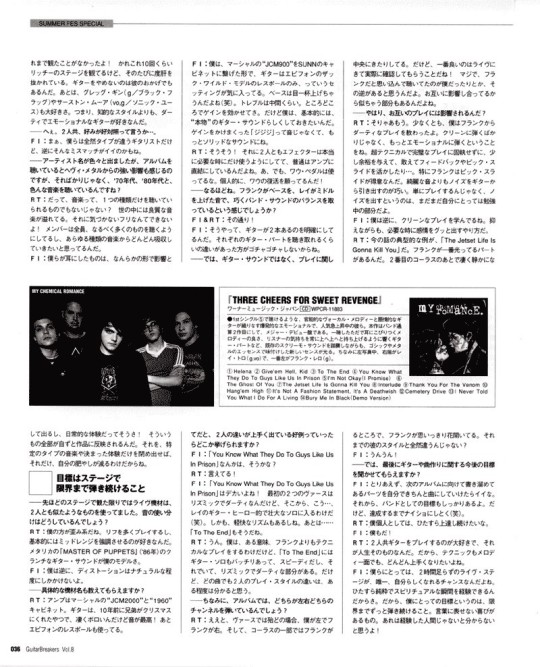

translation: "my chemical romance interview. "for us, the live stage is the only place where we can be ourselves."
The songs are like a collection of rock anthems from all over the world, past and present, and it sets the hearts of listeners ablaze.
Who is the emo band that rocked the Summer Sonic stage?
My Chemical Romance, from New Jersey, who just released their major debut album "THREE CHEERS FOR SWEET REVENGE" in July, came to Japan for the first time at Summer Sonic 04. MCR's music is called "screamo" because of their friendship with their friends, including THE USED, and their style, and it contains the street/garage sensibility unique to the generation that went through American punk in recent years… but if you listen to it with a calm ear, you can see that although the vocals are "screamo style," the songs have a beautiful structure and tearful melodies that are related to British heavy metal, and they also feature beautiful guitar solos. In other words, MCR is a band that plays heavy metal at the street level… That's why they must have been so welcomed right from the start in Japan, a country that has a strong tradition of heavy metal music (probably) - their first performance in Japan was a big success.
45 minutes after the end of the thunderous "Summer Sonic" stage
We caught up with the two excited guitarists!
I've never been to a show like that before! I'll never forget this experience.
--Now Frank Iero (FI): This isn't real.
How was the live show you just finished?
FI: Seriously! I've never done a show like that before. It was a memorable moment in my life. I'll never forget it!
--You seem very excited. What was so amazing about it?
Ray Toro: No, not "What". WTF! I mean, they were so welcoming! I wasn't expecting that kind of reaction at all. It felt like a hometown show. Oh, what can I say… ahhhh… anyway, it feels great!-- (Laughs)
Was the positive reaction because the new york was great? Especially the first single "I'm Not Okay" it's really exciting… It's a great song, and the song structure is well-crafted, building up from the intro, and the solo is uplifting too. Did you feel any magic when you made it?
FI: Well, let me tell you something. This song is something that you can't really call "written".
Really? Is that so?
FI: That's true. The song itself only has four chords, right? Except for the solo, it's all four. So at first, I thought it would be a boring song. But when we got together in the studio and Ray was playing those four chords over and over… Gerald (Way/vocals) started singing. The other members were silent. I closed my eyes and listened carefully. Then I realized it was an incredibly beautiful song. I felt it was worth completing. So I tried to change it up with the chorus. The root remained four.
---The guitar solo in this song creates a harmony with the guitar, creating a grandeur that is reminiscent of Queen. How did this come about?
FI: That solo was all Ray!
RT: Of course we were totally inspired by Queen! We were all saying, "Let's have a big guitar solo. Nobody does that anymore!" So I layered the guitars on it and made it as epic as possible. Also, when we were writing the song originally, we talked about making it as production-heavy as possible in the studio… Another thing I did consciously was to think of all the '80s pop and '70s bands I liked. I thought, "What would they do to make a song that's really epic…?" That's also where the two-second piano in the middle of the song came from. It doesn't really mean anything, but it's a bit like a soundtrack.
In terms of age, he was still very much alive.
FI: To tell you the truth, that second part is from the live album "CHEAP TRICK AT BUDOKAN" (1978) [laughs] I really wanted to include it. To begin with, even though some people have performed it live, I've never heard it performed in a studio album. I tried to include that as well and create the biggest anthem I could think of.
Q: Not just "I'm Not Okay," but all of MCR's songs…The composition is designed to make the listeners excited. They are all uplifting and dramatic. Is this something you do consciously?
FI: I'm totally aware of it.
RT: Yes. You can hear it in the song, but I change parts one after another. For example, We never repeat the same parts twice, and as the song progresses, new elements are added. We want it to feel like it's building from one thing to the next. Every member of the band contributes to that. The drums, the vocals, the melodies…everything helps the song to go higher and higher.
FI: Especially the new album, "It's Not A Fashion Statement, It's a Deathwish" crescendos all the way through. It just gets stronger and stronger. It all comes together in a spectacular finale. The whole band sings together for an anthemic ending. Because I like it! Our styles are completely different, maybe that mismatch is a good thing?
MCR's music tends to be dramatic. Is that due to the influence of the music you've listened to up until now?
RT: I grew up listening to heavy metal, like Ozzy Osbourne. I was obsessed with guitar heroes. I like bands that feature guitar players such as the late Randy Rhoads (g/Ozzy Osbourne) and Joe Satriani, Jimi Hendrix… In other words, Randy is the one who combined heavy metal with classical music, but his guitar playing I think he is the person who has had the biggest influence on my style. It's a bit old-fashioned, but it has a melody. And it's timeless. Melody.
FI: Richie Havens. My first woodstock. He was the opening act for the concert. He took me to an acoustic I just played it with one guitar, like a solo. There wasn't much, just sitting on the stool. He played very melodic and rhythmic guitar. But it's a completely unique style that can't be imitated. He had tiles… Such a great performer. I've never seen him before! I've seen Richie on stage about 10 times now, and I'm blown away every time. He's one of the reasons I don't stop playing guitar. I also love Greg Ginn (guitar/Black Flag) and Thurston Moore (vocals, guitar/Sonic Youth). In other words, I like dirty and emotional guitar more than intellectual style.
——————Hmm. You two have completely different tastes…
FI: Well, we are completely different types of guitarists, but maybe that mismatch is a good thing.
--You mentioned a lot of artists, but listening to your album I can sense a strong influence from heavy metal. But you also listen to a lot of different music from the '70s and '80s, right?
RT: Well, you can't just listen to one type of music, you know? There's so much good music out there. We can't just pretend not to notice it! All of us in the band try to listen to as much as we can and want to absorb as much as we can from all kinds of music.
FI: What we heard was an influence in some way.
FI: I like to use a Marshall JCM900 connected to a SUNN cabinet, and an Epiphone Zak Wylde model Les Paul as the only guitar. I turn up the bass all the way (laughs). Treble is about mid-range. I add gain here and there. But I like to keep it sounding like a real guitar. Not a "buzzing" sound with too much gain, but more of a solid sound.
RT: Yes! And we both try to only use effects when absolutely necessary, and usually plug them straight into the amp. Oh, but we do use wah pedals. Personally, I'd love to see the wah come back!
--I see. So with Frank on the bass and Ray raising the middle, it feels like you've managed to balance the band sound well?
FI&RT: Exactly!
FI: That's how I make it clear that there are two guitars. It's better to have a difference where you can hear each guitar part and it doesn't sound too cluttered.
――――So, let's talk about your playing, not just the guitar sound.
RT: I've been in the middle of it all. But the best thing to do is come to a show and see for yourself! I think there have been times when people thought it was Frank and it was me, and vice versa. We've influenced each other so we have some similarities.
---So you're influenced by each other's playing?
RT: Yeah. At least I got it from Frank.
I learned to play dirty. Not just clean, but more emotional. Instead of being super technical and perfect, I gave myself a little more leeway and tried to avoid feedback and pick-squeezing.
Frank is especially good at pick slides. He likes to make noise out of the guitar, rather than a pretty sound.
He's really good at bringing that out. Making noise, not just playing, is something I'm still learning.
FI: I'm the opposite, I'm learning to play clean, to keep things under control, but still let out emotion when necessary.
RT: A classic example of what you're talking about is "The Jetset Life Is Gonna Kill You." Frank has a really great part here. After the second chorus, it gets really quiet.
"THREE CHEERS FOR SWEET REVENGE" Warner Music Japan [CD] WPCR-11883 Sensual vocal melodies and emotional guitars, as heard on the 1st single.Their popularity is on the rise thanks to the explosive emotion of their vocals. This is the band's second album and their major label debut. Ray's strengths are in his guitar playing, which always lifts the listener up. While talking about the existing screamo sound, such as the "screamo" part, a new sense of flavoring with the essence of gothic and metal shines. And it's the same with everyday experiences! Everything that comes out of it naturally comes out in the work, and the more I shut out certain types of music or certain experiences, the less fertilizer I have. The goal is the stage. Keep playing to the limit. From what I saw on stage a while ago, the live equipment was, you both used similar things. How do you differentiate between the sounds?
RT: I'm more into distortion. I play a lot of riffs and generally like to emphasize the mid-range.
My model was the crunch guitar sound of Metallica's "Master of Puppets" (1986).
FI: On the other hand, I only use distortion to a natural degree.
Can you tell me the specific equipment names?
RT: The amps are Marshall "JCM2000" and "1960".
Cabinet. The guitar was bought by my brother for Christmas 10 years ago.
It's a very easy one to make, but the sound is great!
I also use an Epiphone Les Paul.
036 GuitarBreakers Vol.8
He said it was a good example of how the differences between the two of them are well expressed.
Can you name any?
FI: You Know What They Do To Guys Like Us
In Prison, I guess?
RT: You're right!
FI: You Know What They Do To Guys Like Us
"In Prison" is huge! The first two verses are
It's rhythmic and dirty, and then…
Ray's guitar hero-like, epic solo begins (laughs). And it has a light rhythm. And then there's "To The End" too.
RT: Yes. In some ways, I play more technically than Frank, but "To the End" has a great guitar solo, it's fast, and it's got some rhythmic, dirty parts. But I think you can hear the difference in our playing styles on every song to some extent.
---By the way, on the album, which is left and which is right?
Are you playing the channel?
RT: Well, in the verses, I mostly play on the left.
Ray is on the left. And Frank is on the right in the chorus.
Frank really blossoms in this scene. It's totally different from his previous style.
FI: Mmhmm!
---Finally, could you tell us about your future goals regarding guitar and songwriting?
FI: For now, I'd like to be able to turn the parts I've written for the next album into proper songs.
Also, we have a clear goal as a band.
But I'll keep it a secret until I achieve it (lol).
RT: For me personally, I just want to keep improving.
FI: Me too!
RT: We both love playing guitar.
That's what life is all about, so I want to keep improving both in technique and melody.
FI: For us, it was a live show that lasted less than two hours. I think that the only chance I have is to be myself, to experience a pure and spiritual moment. So my goal is to continue to play all the way to the end. There is a joy that cannot be expressed in words. I don't think you can understand it unless you have experienced it!
My Chemical Playing - A magnificent world created with guitar
The key to My Chemical Romance's songs is the twin guitars. When the two guitars intertwine, sometimes intensely and sometimes elegantly, it gives the listener a great sense of exhilaration.
Ray was crazy about guitar heroes like Randy Rhoads and Joe Satriani, while Frank loves Greg Ginn and Thurston Moore. They come from completely different backgrounds, but as Ray says, "When we get together, we don't know why, but a special atmosphere is born," which is the characteristic of the My Chemical Romance sound. In fact, Alba
If you check out his playing, you can hear many good examples of two-guitar ensemble. One of the best is the backing for "I'm Not Okay (I Promise)." As mentioned in the interview, the bass in this song is a repeat of four chords (D → Bm Em → A), but it is amazing how the performance is not at all simple. Due to space limitations, I will not post an example.
"I'm Not Okay" style guitar solo sheet music.
I'm sorry I can't introduce it, but I definitely want you to check out the ensemble in the A-melody. So, I'll introduce the solo below. This performance was inspired by Queen and was meant to be grand. The harmonies are great, but the chord progression is deliberately E/G#, even though E would have been fine in the flow. This is one of the reasons why it feels so grand.

In the harmonies from bars 1 to 8, you want to be aware of the speed at which you raise the pitch of the choking, and the speed and depth of the vibrato.
The first half of bar 12 means "play five notes in two beats."
2004 volume 8 guitar breakers from theydrewblood.blogspot.com
#english translation#2004#ray and frank interview#the sheet is an embellished version of the i'm not okay solo#can read sheets but do not understand guitar technical shit at all lol#my chemical romance#frank iero#ray toro#gerard way#mikey way#revenge era#mcrmy japan#interviews
208 notes
·
View notes
Text


REITA from the Live Tour 2022-2023 MASS “The Final” 07.15 at Nippon Budokan
#the gazette#reita#the most beautiful smile#I miss him a lot#my lsthvn#my screenshots#miya’s screenshots
239 notes
·
View notes
Text

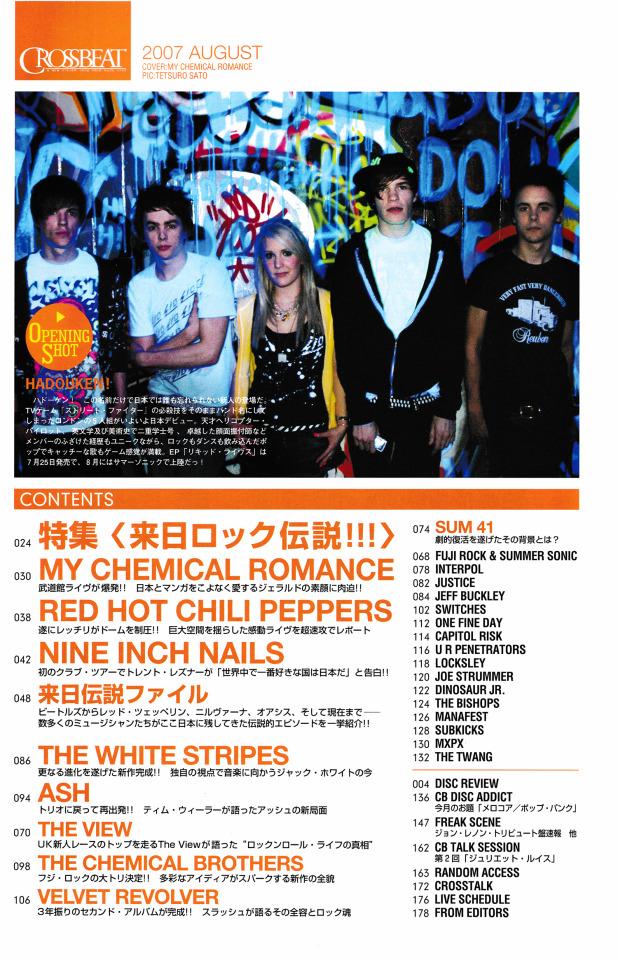

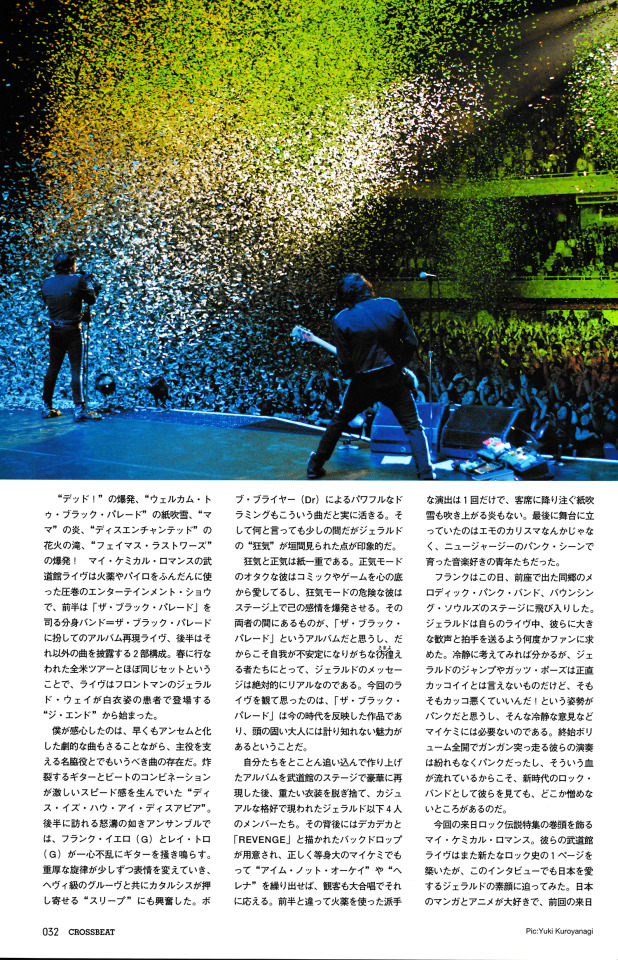

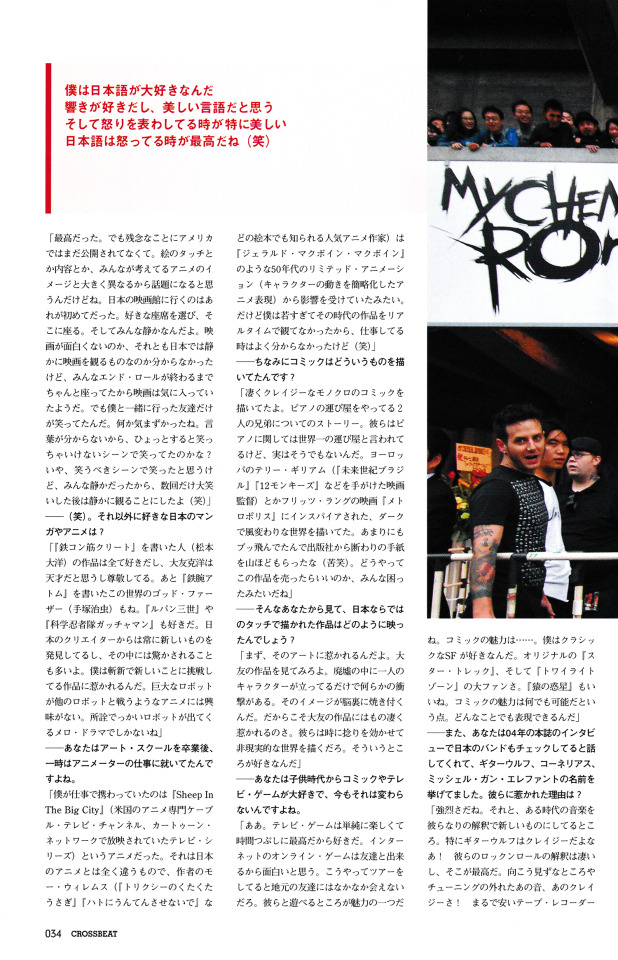
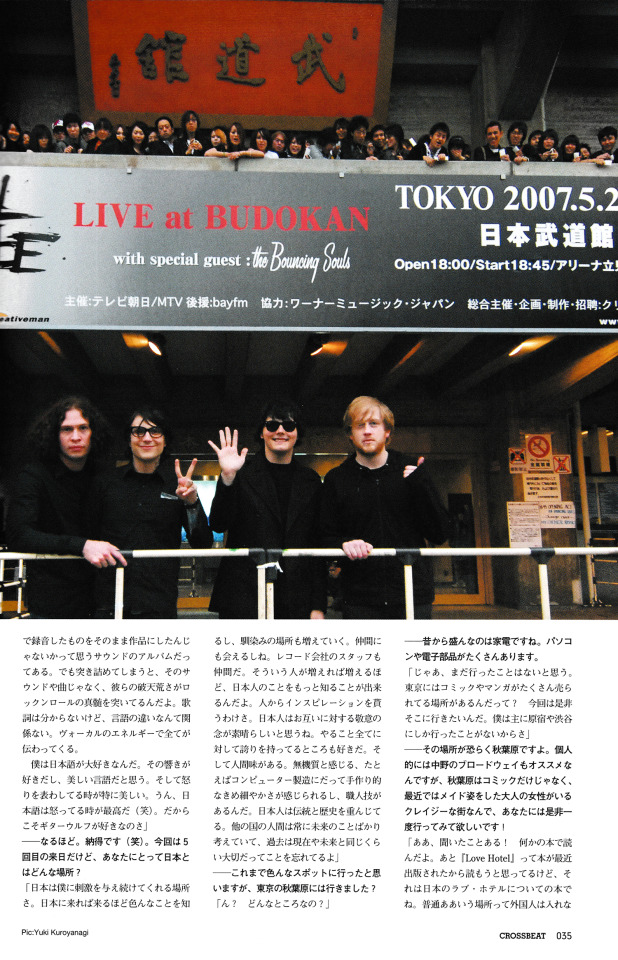
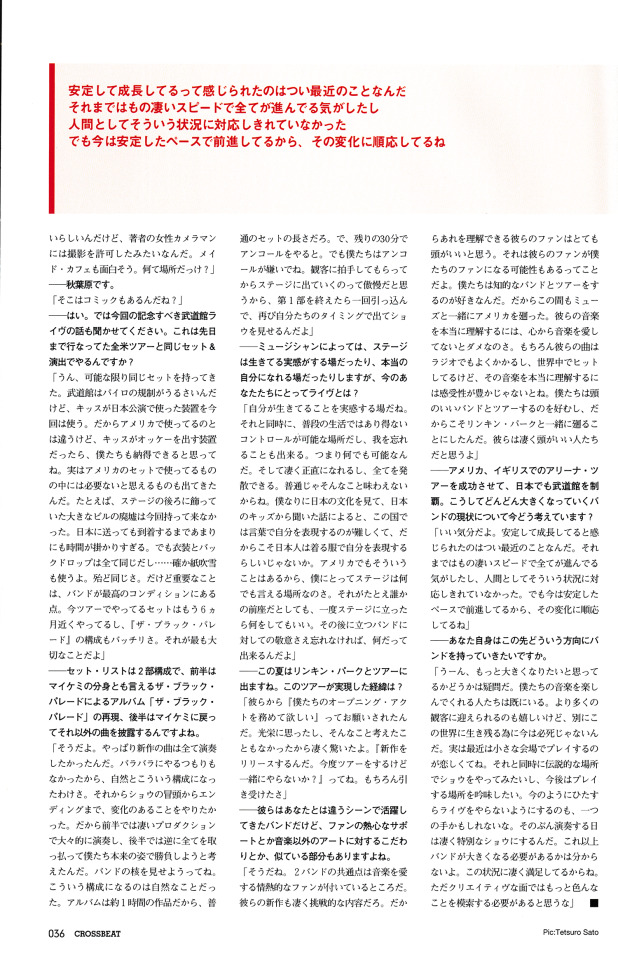

crossbeat magazine, aug 2007
translation/transcription under cut
Crossbeat - AUG 2007 - TRANSLATION
PAGE 30-31 (excluding cover and contents page):
Special feature on rock legends coming to Japan
MY CHEMICAL ROMANCE
AKIRA, Tekkonkinkreet, Lupin III - "I'm attracted to works that are innovative and take on new challenges. I love them. I can't stop thinking about them."
Welcome to MCR Theatre @Budokan!! A drama of destruction and rebirth explodes in a spectacular live performance!! Japan and Manga
Interview by Takuro Ueno, interpreter: Tomoko Katsuta
We take a look at Gerard's true personality and the band's latest vision as a huge fan of the band.
Pics: Tetsuro Sato
PAGE 32:
The explosion of "Dead!", the confetti of "Welcome to the Black Parade", the flames of "Mama", the fireworks of "Disenchanted", the explosion of "Famous Last Words"! My Chemical Romance's Budokan live show was a spectacular entertainment show with plenty of gunpowder and pyro. The first half was a live performance of the album in which they dressed up as the band The Black Parade, the alter-ego of "The Black Parade", and the second half was a performance of other songs. The set was almost the same as the US tour in the spring, and the live started with "The End", in which frontman Gerard Way appeared as a patient in a white coat.
What impressed me was not only the dramatic songs that quickly became anthems, but also the presence of songs that could be called excellent supporting actors that supported the main characters. The combination of explosive guitar and beats in "This Is How I Disappear" created a sense of intense speed. In the second half, Frank Iero (G) and Ray Toro (G) strummed their guitars with complete concentration in the raging ensemble. The heavy melody gradually changed its expression, and I was also excited by "Sleep," which had a cathartic surge along with a heavyweight groove.
Bob Bryar's (Dr) powerful drumming also really came into play in this kind of song. And what was most impressive was the glimpse of Gerard's "madness" for a short time.
There's a fine line between madness and sanity. In his sane mode, he's a geek who loves comics and games with all his heart, while in his dangerous mad mode, he explodes with emotion on stage. I think that the album "The Black Parade" is somewhere between the two, and for those wanderers whose egos tend to become unstable because of their wandering, Gerard's message is absolutely real. What I thought after seeing this live performance was that "The Black Parade" is a work that reflects the current era, and it has an immeasurable appeal to stubborn adults.
After performing the album that they had pushed themselves to the limit and creating in a lavish manner on the Budokan stage, Gerard and the other four members shed their heavy costumes and appeared in casual clothes. Behind them was a backdrop with the word "REVENGE" written in large letters, and when the life-sized My Chemical Romance performed "I'm Not Okay" and "Helena," the audience responded with a chorus of their own. Unlike the first half, there was only one flashy performance using gunpowder, and there was no confetti raining down on the audience or flames rising up. At the end, the people who stood on stage were not emo charisma, but young music-loving men who grew up in the New Jersey punk scene.
On this day, Frank joined the stage of the opening act, the melodic punk band Bouncing Souls from his hometown. Gerard asked the fans several times during his performance to give them loud cheers and applause. If you think about it objectively, you can see that Gerard's jumps and fist pumps are not cool, but I think that the attitude of "it's okay to be uncool!" is punk, and such objective opinions are not necessary for My Chemical Romance. Their performance, which was full volume and full force from start to finish, was unmistakably punk, and it is because of this blood that they are somehow hard to hate, even when viewed as a new-age rock band. My Chemical Romance, who graces the front page of this special feature on rock legends visiting Japan, have written another page in rock history with their live performance at the Budokan, but in this interview we also get a glimpse into the true face of Gerard, who loves Japan. He loves Japanese manga and anime, and when he came to Japan last time
Pic: Yuki Kuroyanagi
PAGE 33:
he even went to the cinema. When I explained the purpose of the photo on the front page, he cheerfully agreed to a two-shot with Mario, a character representing Japan.
----What kind of image did you have of Japan before?
"I was imagining the world of Ridley Scott's film, 'The Blade Runner.' I'm also a big fan of comics and Katsuhiro Otomo's work. I especially love 'AKIRA,' so I thought it would be something like the opening scene of that story, and I think that image was correct. But I ended up loving this country even more than I had imagined. I had no idea that Japanese people were people who respected others and their environment so much, and it was refreshing to be able to come into contact with such people and have such a variety of experiences before returning to America."
----You've toured to quite a few countries, but your first visit to Japan was in 2004. What were your impressions at the time?
"I feel like I've landed on Mars. And I mean that in a good way. It's completely different from any other place I've ever been to. The cityscape, the culture, everything I could see was different from any other country. I've had the chance to tour many countries, but when I went there, I was disappointed to see that there were many similarities to America, or even the same things. But Japan is original and amazing. I was fascinated by everything, from vending machines to key chains to TVs. I don't understand what they're saying when I watch TV, but there's a lot to absorb. I'm always looking for something to stimulate me, so this country is perfect for me."
----Your first live show was on the indoor stage at Summer Sonic. How did you feel about the audience's reaction? They were really excited about songs like "I'm Not Okay."
"It was amazing! I'm so glad to get such a reaction.
I never dreamed that we would get such a good response to "I'm Not Okay" in a country we visit for the first time. But it was especially special to have such a good response in Japan. The first time we played in the UK was on tour with The Used. We have a following in the UK now, but the kids who saw our show back then seemed confused about how to respond to our music. I think they liked it, but the reaction was surprisingly calm. After that, we played in a small club in Germany, and it was a big hit. Then we came to Japan and the crowd was so excited, right? It was amazing that we were able to play in front of such a large audience, but when we played "I'm Not Okay," it was even more amazing.
----After that, you did a solo tour in Japan. What is the most memorable episode from your live shows in Japan so far?
"Well... they're all great... let me think about it... there's just so much fun to be had in Japan. The last time I played at Summer Sonic (in 2006) was memorable, the day I was on the outdoor stage in front of Linkin Park. It was a big victory to be able to play at Summer Sonic again, because it was my second time playing at a stadium. At the first Summer Sonic, I was battling drugs and alcohol. So it was impressive to come back and play on that big stage and do a show in front of thousands of people. I remember being able to show a great performance."
----When you visited Japan in January this year, you apparently went to see the film "Tekkonkinkreet."
Pic: Tetsuro Sato
PAGE 34:
I love Japanese. I love the sound of it. I think it's a beautiful language. And it's especially beautiful when people are angry. Japanese is at its best when they're angry (laughs). [top quote]
"It was amazing, but unfortunately it hasn't been released in the US yet. I think it will be a hot topic because the drawing style and the content are very different from what people think of when they think of anime. It was my first time going to a Japanese movie theater. You choose your seat and sit there. And everyone was quiet. I don't know if the movie was boring or if people in Japan watch movies quietly, but everyone stayed seated until the end credits, so it seemed like they liked the movie. But the only one who was laughing was my friend who went with me. It was kind of awkward. I didn't understand the language, so maybe I was laughing at scenes I shouldn't have laughed at? No, I think I laughed at scenes I should have laughed at, but everyone was quiet, so after laughing a few times, I decided to watch quietly (laughs)."
----(laughs) What other Japanese manga and anime do you like?
"I like all the works of Matsumoto Taiyo, the writer of ‘Tekkonkinkreet,’ and I respect Otomo Katsuhiro, who I think is a genius. I also like Tezuka Osamu, the godfather of this world, who wrote ‘Astro Boy.’ I also like ‘Lupin III’ and ‘Science Ninja Team Gatchaman.’ I'm always discovering new things from Japanese creators, and they often surprise me. I'm attracted to works that are innovative and try new things. I'm not interested in anime where giant robots fight other robots. It's just a melodrama with big robots in it."
----After graduating from art school, you worked as an animator for a while.
"I was working on a cartoon called "Sheep in the Big City" (a TV series that aired on the American cable TV channel Cartoon Network). It was completely different from Japanese animation, and the creator, Mo Willems (a popular animation artist known for his picture books such as "Knuffle Bunny: A Cautionary Tale" and "Don't Let the Pigeon Drive the Bus!"), was influenced by 50s limited animation (animation that simplifies the character's movements) such as "Gerald McBoing-Boing". But I was too young to watch the works of that era in real time, so I didn't really understand them when I was working (laughs)."
----By the way, what kind of comics did you draw?
"I drew [a] really crazy black and white comic. It was about two brothers who work as piano movers. They're said to be the best piano movers in the world, but they’re really not that good. I was inspired by American directors like Terry Gilliam (the director of "Brazil" and "12 Monkeys") and [the] Fritz Lang's film "Metropolis." I drew a dark and eccentric world. It was so outlandish that I got a ton of rejection letters from publishers (laughs). People seemed to have trouble figuring out how to sell it.”
----So from your perspective, what did you think of this work, which was painted with a uniquely Japanese touch?
"First of all, I'm attracted to the art. Look at Otomo's work. Just a single character standing in ruins creates a certain kind of image. That image is burned into your brain. That's why I'm so attracted to Otomo's work. He sometimes puts a twist on it and depicts an unrealistic world. That's what I like about him."
----You've loved comics and video games since you were a child, and that hasn't changed at all.
"Yes. I like video games because they are simply fun and a great way to kill time. I think online games on the Internet are fun because you can play them with your friends. When you're on tour like this, it's hard to meet up with your friends back home. Being able to play with them is one of the attractions.
The appeal of comics is... I love classic science fiction. I'm a big fan of the original Star Trek and The Twilight Zone. Planet of the Apes is good too. The appeal of comics is that anything is possible. You can express anything."
----You also said in a 2004 interview with this magazine you also check out Japanese bands on YouTube. You mentioned Guitar Wolf, Cornelius, and Michelle Gun Elephant. What attracted you to them?
"Their intensity. And the way they take music from a certain era and make it new with their own interpretation. Guitar Wolf is especially crazy! Their interpretation of rock and roll is amazing, and that's what makes them great. Their recklessness, that off-tune sound, that craziness! It's like they're playing a cheap tape recorder.”
PAGE 35:
There is an album with a sound that makes you think they just recorded it in a live recording session. But when you get down to it, it's not the sound or the songs, but their unconventionality that gets to the essence of rock and roll. I don't understand the lyrics, but the language difference doesn't matter. The energy of the vocals conveys everything. I love Japanese. I love the sound of it, I think it's a beautiful language, and it's especially beautiful when it's angry. Yes, Japanese is at its best when it's angry (laughs). That's why I love Guitar Wolf."
----I see. That makes sense (laughs). This is your fifth visit to Japan. What does Japan mean to you?
"Japan is a place that continues to inspire me. The more I come to Japan, the more I learn.
You get to know more places, and you get to meet new friends. The record company staff are my friends. The more people I know, the more I get to know Japanese people. I get inspired by them. I think the respect Japanese people have for each other is amazing. I like how they take pride in everything they do. And it's human. Even in things that seem impersonal, like computer manufacturing, you can feel the handcrafted attention to detail and craftsmanship. Japanese people value tradition and history. People from other countries are always thinking about the future and forget that the past is just as important as the present and the future.
----You've probably been to a lot of different spots, but have you been to Akihabara in Tokyo?
"Hmm? What's it like there?"
----Home electronics have always been popular. There are lots of computers and electronic parts.
"Well, I guess I haven't been there yet. I heard there's a place in Tokyo that sells a lot of comics and manga? I'd really like to go there this time. I've mainly only been to Harajuku and Shibuya."
----That place is probably Akihabara. Personally, I also recommend Broadway in Nakano, but Akihabara is not only a comic book town, but it's also a crazy town where you can see adult women dressed as maids these days, so I definitely recommend you go there at least once!
"Oh, I've heard of it! I read it in a book. Also, a book called "Love Hotel" was recently published, so I'm thinking of reading it. It's a book about love hotels in Japan. Usually, foreigners can't enter those kinds of places.
Pic: Yuki Kuroyanagi
PAGE 36:
It's only recently that I've felt like I'm growing steadily. Before that, it felt like everything was moving so fast, and I wasn't able to cope as a person with that. Now that I'm moving forward at a steady pace, I'm adapting to the changes. [top quote]
Apparently, they were not allowed to take photos, but the author's female photographer was allowed to do so. The maid cafe also looks interesting. What place was it called again?
----Akihabara.
"There are comics there too?"
----Yes. Now, please tell us about this memorable Budokan live. Will it be with the same set and production as the US tour that was just recently?
"Yeah, we brought as much of the same set as possible. The Budokan has strict rules about pyro, but we're using the same equipment that Kiss used in Japan. So it's different from what we use in the US, but if Kiss gave us the OK, we thought we could accept it. In fact, we found that some of the things we use in the US set were unnecessary. For example, we didn't bring the ruins of a big building that we had at the back of the stage this time. It would take too long to send it to Japan. But the costumes and backdrops are all the same... and we'll use confetti, too. It's pretty much the same. But the most important thing is that the band is in top condition. We've been doing the set we're doing now for almost six months, and the composition of "The Black Parade" is perfect. That's the most important thing."
----The set list is divided into two parts, the first half is The album "The Black Parade" by The Black Parade, which can be said to be the alter ego of My Chemical Romance,and the second half is a return to My Chemical Romance and performance of other songs.
"That's right. I wanted to play all the songs on the new album. I wanted to do it in a big way. I didn't want to do it in pieces, so it just naturally came out like this. I also wanted to do something that would change from the beginning to the end of the show. So in the first half, we played a big performance with a big production, and in the second half, we stripped everything away and played our original selves. We wanted to show the core of the band. It was natural that it would be structured like this. The album is about an hour long, so it's not something that you normally hear. That's the length of a standard set. And then we do an encore in the remaining 30 minutes. But we don't like encores. We think it's arrogant to wait for the audience to applaud before going on stage, so after the first part, we go back[stage] and come out again at our own pace to show our support. [our appreciation (?)]"
----For some musicians, the stage is a place where they feel alive and can become their true selves, but what do live performances mean to you right now?
"It's a place where you feel alive. At the same time, it's a place where you can have a control that you don't have in your everyday life, and you can lose yourself. In other words, anything is possible. You can be very honest and let everything out. You can't experience that in your everyday life. From what I've seen of Japanese culture and what I've heard from Japanese kids, it's hard to express yourself with words in this country, so Japanese people express themselves through the clothes they wear. That's the case in America too, so for me, the stage is a place where I can say anything. Even if I'm opening for someone, once I'm on stage I can do anything. As long as I respect the band that's coming up after me, I can do anything."
----This summer you'll be touring with Linkin Park. How did this tour come about?
"They asked me to be their opening act. I was honored and really surprised because I'd never thought about it like that. They said, 'We're releasing a new album. We're going on tour soon, do you want to join us?' Of course I accepted."
----They're bands that have been active in a different scene than you, but there are some similarities between you and them, like the enthusiastic support of your fans and your commitment to art outside of music.
"That's right. The commonality between the two bands is that they have passionate fans who love music. Their new work is also very challenging. I think their fans are very smart because they can understand that. That means their fans could become our fans too. We like to tour with intelligent bands. That's why we toured the US with Muse recently. To really understand their music, you have to love it from the bottom of your heart. Of course, their songs are often played on the radio and are hits all over the world, but to really understand their music, you have to be sensitive. We like to tour with intelligent bands, and that's why we decided to tour with Linkin Park. I think they're very smart people.
----They have had successful arena tours in the US and the UK, and have conquered the Budokan in Japan. How do you feel about the band's current state as it continues to grow?
"I feel great. It was only recently that I felt like we were growing steadily. Up until then, it felt like everything was moving at an incredible speed, and as people, I wasn't able to cope with that situation. But now we're moving forward at a steady pace, so I'm adapting to the changes."
----What direction do you want to take the band in the future?
"Well, I'm not sure if we want to get bigger. There are already people who enjoy our music. I'm happy to be welcomed by a larger audience, but we're not struggling to survive in this world. Actually, I miss playing small venues these days. At the same time, I want to play shows at legendary places, and I want to think about where I'll play in the future. Maybe it's one way to stop playing shows like we do now, and make the days we do play very special. I don't know if the band needs to get any bigger. I'm very happy with the situation. But I think we need to explore more creatively. ■
Pic: Tetsuro Sato
------
OP NOTE: this translation is ROUGH from google - i tried my best to make sense of some more of the questionable parts. please feel free to message me if i made any mistakes!
60 notes
·
View notes
Text


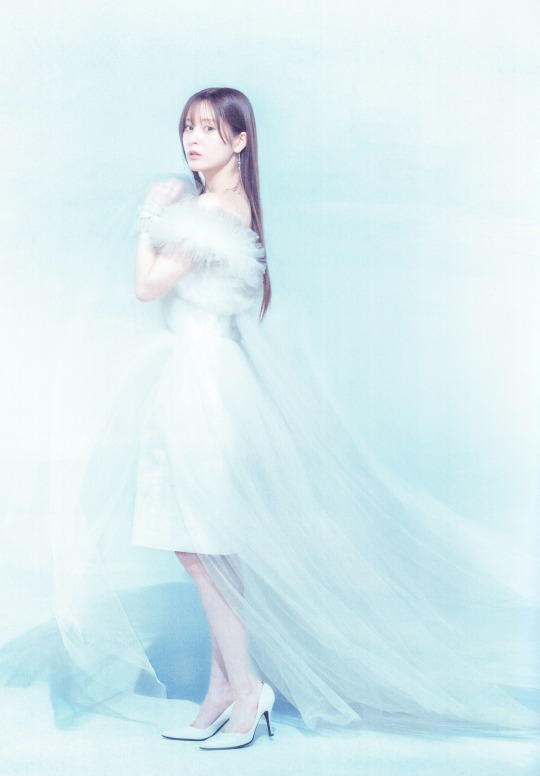
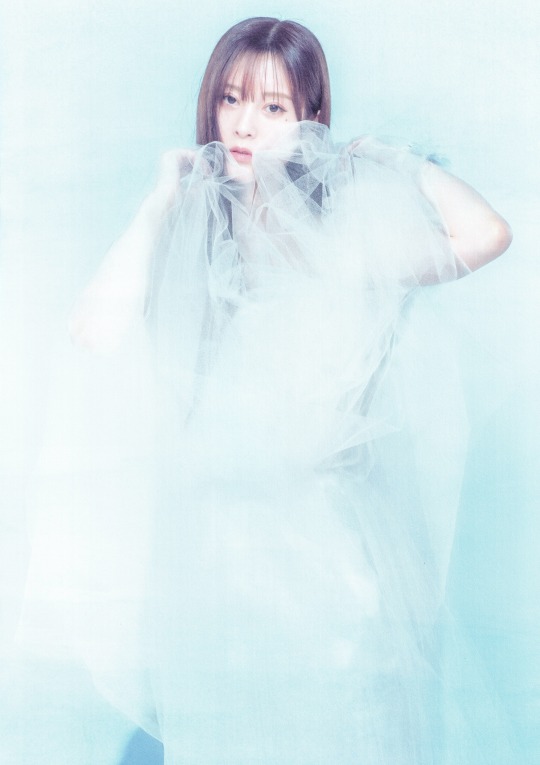
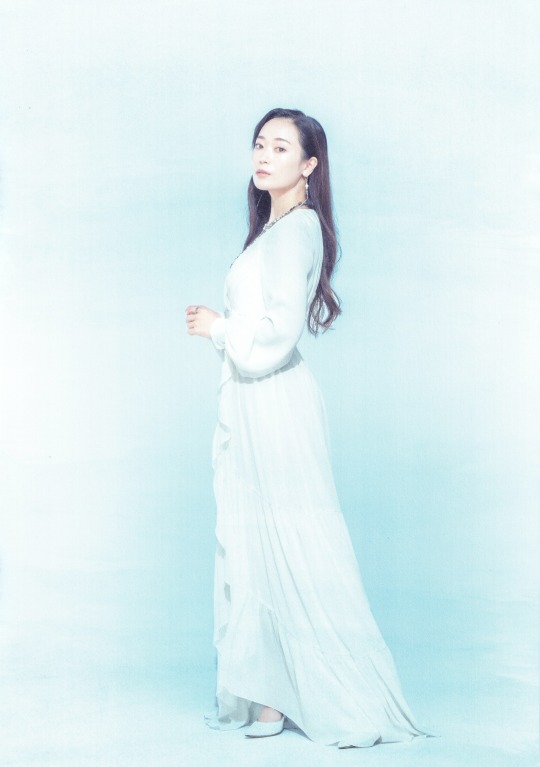
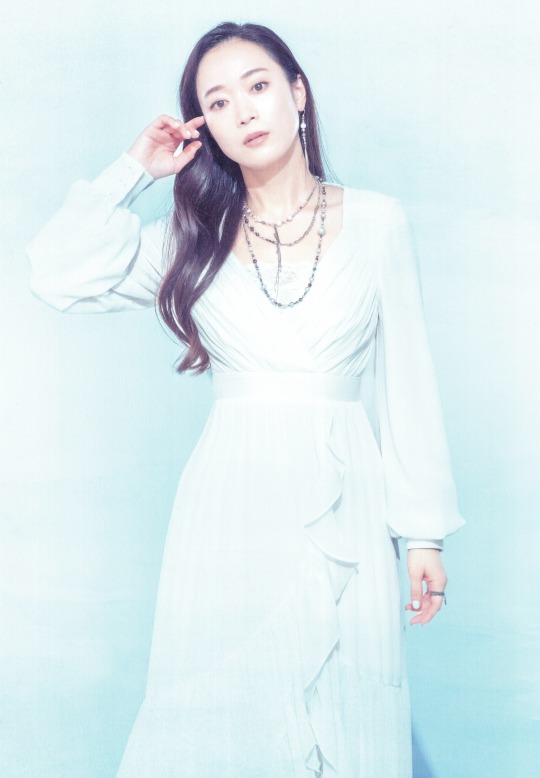


Kalafina Anniversary Live 2025 Pamphlet HQ Scans Part 2
Part 1 | Part 2 | Part 3
Google Drive Link
👉 For PERSONAL USE ONLY 👉 CREDIT me and LINK to my blog if you use/share 👉 SUPPORT Kalafina | BUY the pamphlet
Interview with Wakana
--This will be Kalafina's first live performance in about seven years. How did you feel when you found out that the concert was going to be held?
"On January 23rd, 2018, we held our 10th Anniversary LIVE at Nippon Budokan, and on March 30th we appeared on stage on the opening day of our 'Kalafina 10th Anniversary Film', which ended up being our last public appearance as a trio. Seven years have passed since then so I'm really happy that we can perform live again as Kalafina. Many people worked hard to make this happen, and when the three of us found out about this opportunity, I thought to myself, 'if we're allowed to perform live again, I definitely want to do it!' Turns out the three of us all felt the same way about this."
--How did you feel when the three of you first got together to sing during a live rehearsal?
"The first rehearsal was meant to be a sort of 'voice tuning' where we just sang through the entire setlist. It had been six years since I last sang with the two of them, so I was strangely nervous at first *laughs*. But as soon as we started singing, all my memories came back and I was able to adjust my singing technique right away, knowing exactly what to do and where to change certain parts. The accumulation of our 10 years as Kalafina has remained with me, and I was surprised at how easily we were able to just pick up where we left off, we quickly made up for the time we had spent apart. There was no need to worry about anything."
--What did the three of you talk about at that time?
"I think that singing helped us connect with each other more than talking. I was in a choir when I was in elementary school, and I started singing gospel in high school, so I've always loved singing with other people. By singing and giving each other tips, we were able to communicate with each other, and thanks to the other two I was able to release my vocal power. It was a lot of fun 'fine-tuning our voices'."
--Please tell us your thoughts on Hikaru and Keiko's vocals.
"It's something I've always felt, but each of us has a completely different vocal quality, but when the three of us sing together, something comes together, and a mysterious harmony is born. When I sang together with Hikaru and Keiko for the first time in a long while, I felt a special feeling that resonated in my heart, like 'ah, yes, this is it. This is something that only Kalafina can do, and no one else can'."
--Kalafina's music has a unique worldview, right?
"Yes, wonderful songs were written for us with a deep understanding of each of our voices, bringing out the best in us, both in melody and harmony. Also, we pushed ourselves to the very limits of our skills at that time, and whenever we sing these songs it makes me feel a sort of loving whip on my back, saying, 'you can go a little further, right?' *laughs*"
--I think the range of your expression definitely expanded throughout the years of your activities.
"With each song we received, my desire to sing more dramatically grew. When Kalafina was first formed, we were often told, 'you don't need to assert yourself or have a unique personality. Just be conscious of singing in a straightforward voice.' There is certainly an appeal to songs that are born from doing so, and I have always tried my best to focus on singing in a way that expresses the world of Kalafina's music in the best possible way, but now I think I am able to incorporate my personal expressions into that without infringing on the unique worldview."
--Kalafina was originally created to sing the theme songs for the anime "Kara no Kyokai," so it's only natural that they would place importance on the worldview of the work.
"That's right. We were aiming for a rather 'inorganic' feel to match the work. But by moving away from 'Kara no Kyoukai' and singing a variety of songs, our concept has changed since the early days. We've become able to incorporate more of our own sensibilities and experiences into our songs, and now that we've each spent years doing solo activities, our range of expression has expanded even more. I really feel that none of our experiences have been in vain, all the time we've spent up until now has benefitted us."
--What are your thoughts about all the fans who have continued to love Kalafina for such a long time?
"First of all, I would like to express my gratitude to everyone who has waited for us until now. What we can do is take in everyone's feelings, draw from them to shape our singing and give back our own feelings of gratitude and joy in the form of music. So for this live performance, I want to sing in a way that will fill the void of seven years in one night. I think it will be a more powerful performance than ever before, so I look forward to seeing you all at the venue."
--Today you had a photo shoot for the pamphlet. Please tell us your impressions of the shoot.
"It was a really fun shoot. During rehearsals we are focused on singing and there isn't much time to chat, but the best thing about a photo shoot like this is that we can be relaxed the whole time. The staff created a wonderful atmosphere, and the three of us being in the same space, chatting for the first time in a long time made me feel like the seven-year hiatus did not even exist. Hearing again how Hikaru and Keiko felt during those seven years and seeing all the photos of the three of us together really made me feel like, 'ah, Kalafina is back’.”
#kalafina#kalafina scans#scans#my scans#kalafina reunion#kalafina anniversary live 2025#my translations#my translation#translation
29 notes
·
View notes
Text
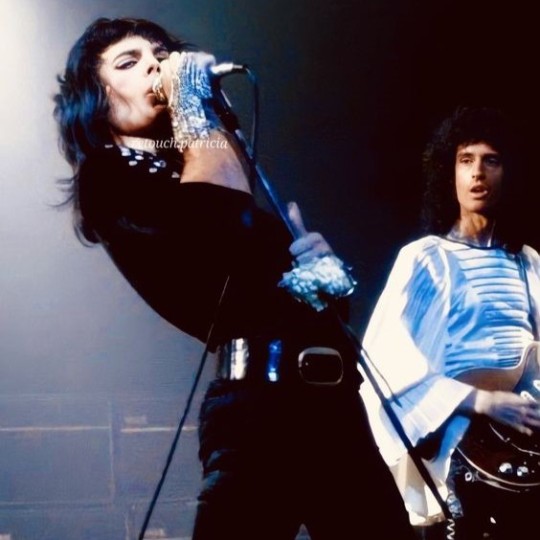
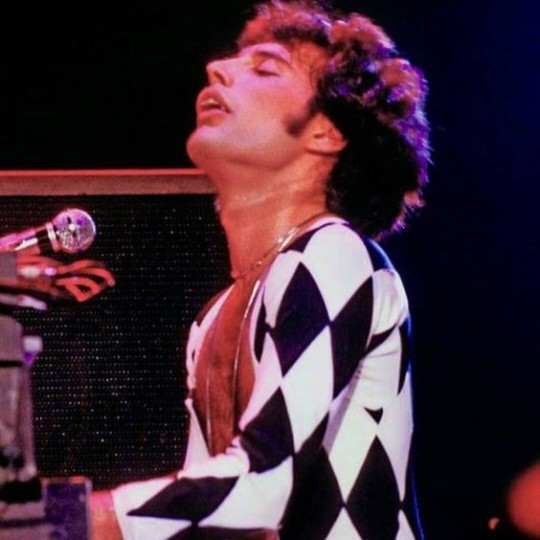
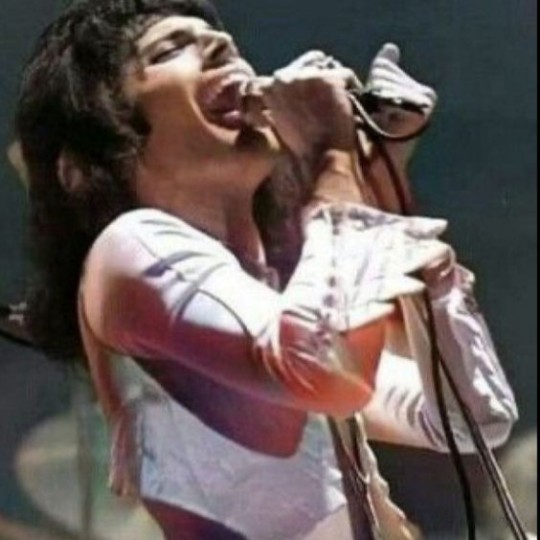
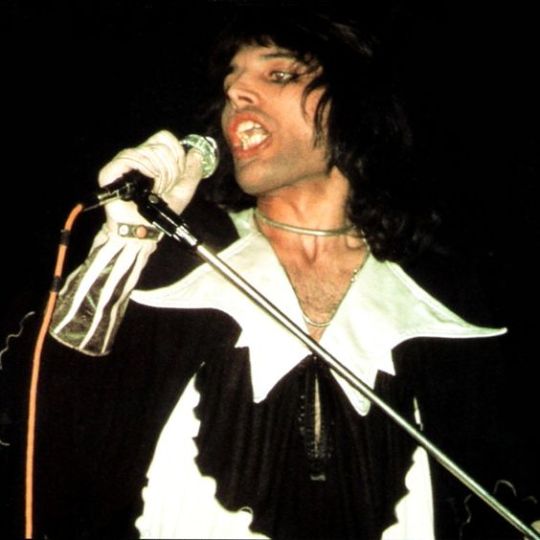
【Freddie Mercury ❣】
My Favorite looks from Freddie Mercury 💌 He's such a fashion iconnnn ♡
╭┈──── (starting from the top right) ──────╮
Queen - Live At The Rainbow, London, 1974
Queen - Live in Houston, 1977
Queen - A Night at the Odeon Hammersmith, 1975
Queen - Sheer Heart Attack Tour '75 Nippon Budokan, Tokyo Japan
╰──────────────────────────────╯
79 notes
·
View notes
Text
Translation: Heterodoxy Pamphlet. Music Writers Reflect on 20 Years of the GazettE, Part 1/6 (2002-2004)
Hello friends! As promised long long ago, I'm starting the Heterodoxy series where music writers reflect on their work with the band in the last 20 years. This might take some time since not all the texts are ready just yet, but I will do my best to finish them as quickly as I can. This is Part 1/6, hope you enjoy it!

scan credit: @rad-is-more
Text by Hiroko Yamamoto [1]
the GazettE was born in March 2002. The band was formed by Uruha and Reita, who were dear friends from elementary school, Ruki, who they crossed in the previous band (back when he was a drummer) and who later changed to vocals, and their first drummer, Yune, who also invited his buddy from a previous band, Aoi. Two months later, they played their first show at Meguro Rokumeikan, a live venue that can be described as a gateway to success for visual kei bands. Their first maxi single "Wakaremichi" has a melancholic, catchy melody and an impressive fast-paced sound. During the encore of their 20th anniversary live at Yoyogi National Gymnasium in March this year, Ruki looked back on the beginning of the band: "We are the GazettE, and 20 years ago we got together thinking this would be the last band of our lifetimes”. It was during those young days when the band was standing on the stage with recklessness and foolhardiness when such strong headbanging songs as “Kantou Dogeza Kumiai” and “Waifu” were created, yet they continue to stay popular to this day. The band's forward momentum is best represented by the time when they had to play “Kantou Dogeza Kumiai” over and over again because they didn’t have many original songs yet. While they were firing the audience up with their so-called "violent songs", they also had an amazing ability to write emotionally rich compositions with Showa-inspired melodies, such as "Juunanasai" (later included in the pamphlet with CD for their first Nippon Budokan concert). Everything in the GazettE of those early days, up to their make-up and costumes, was elusive and funny in a good way, as conveyed by "Sentimental na Onigokko", a song about bullying, which presents the listeners with a droll world view of a locked room.
The band’s first turning point came the following year. In 2003, when their first drummer left the band, Kai, with whom they had played together in session shows, quickly took his place. This made the current five members, and the band moved to a new office. It was Ruki who made a last-minute call to Kai, and the drummer had to join in right from the next day's show. From this point on the band’s rapid progress officially began. the GazettE of those times actively participated in organized taiban [2] events. They were even nicknamed “taiban killers”, as their heat-packed shows helped them steal away fans who had come to see other bands. In the next three months they released three consecutive four-track mini-albums, "COCKAYNE SOUP", "Akuyuukai" and "Spermargarita", which increased the number of their fans in geometrical progression. Incidentally, at the time they called themselves "Dai Nippon Itan Geisha Gazetto" [3]. The name derived from the thought of what the word “Visual Kei” would sound like if it was a Japanese word [4]. On their 15th anniversary in 2017, the band held a concept show at the Yoyogi National Stadium. On that stage today's the GazettE performed songs from the Dainippon Itan Geisha era, so hopefully fans who didn’t know their early days got to know them. The sense of unity between band and fans that rose steam from the live house, the "Jump to us!" screams, and the band's stage presence all developed during that exact period. Back in September of 2003, the band sold out a two-day one-man show at Takadanobaba AREA, and only four months later, in January 2004, their one-man show "JUDGMENT DAY" at SHIBUYA-AX was sold out. On the day of the show, the venue was overflowing with fans, and the venue’s doors were barely closing. The band was not informed that the tickets had been sold out until the day of the show, and how they were surprised by the scenery in front of them and the crowd’s enthusiasm almost seems funny today.
Particular about every aspect of their performances, videos, sets, playing their music live, even coming up with their own ideas for photoshoots and never stopping the work until they are satisfied – this is the GazettE. When I was covering them in a magazine for the first time, I felt that a band of an entirely new generation that took over from the royalty of Visual Kei (although there was no such term back in the day) had entered the scene. I remembered their down-to-earth attitude, in which the live show and the fans who attend it are the most important thing. I also remembered that young the GazettE had a simple goal of keeping the band going, rather than becoming a band that was listened to by a certain number of people. Come to think of it, that hasn’t changed a bit. Truly an ironclad band.

[1] Hiroko Yamamoto / Born in Tokyo. Impacted by glam and punk rock as well as blues in her college days, she started a band and spent her life immersed in music. After working for an entertainment editorial production, she became a freelance writer. She covered the GazettE for the free papers and visual-kei specific magazines like Neo Genesis. She was particularly impressed by the band’s stance with its emphasis on live performances and believing in their music and their fans without being influenced by trends or critical opinions. Currently writes columns on music, as well as films and doramas. (From the pamphlet’s credits)
[2] 対バン (taiban) - A live with several bands performing. Usually those are beginner bands that split the venue and equipment rent as well as other costs.
[3] 大日本異端芸者 (Dai Nippon Itan Geisha) can be translated as “Heretic people of art (professional performers) of the Great Japan”. We know Ruki never chooses names for anything without putting a lot of meaning into it, and I’d say there are many layers to this title as well.
大日本 (Dai Nippon) initially referrs to the Japanese Empire (大日本帝國 Dai Nippon Teikoku, 1868–1947), which embraced the Meiji, Taishō and Shōwa eras in Japanese history, though nowadays it is considered a nationalistic way of referring to Japan. Dai Nippon expressed the overall aesthetics that the GazettE (then - Gazetto) was working with at the time: Japanese flags on the Wakaremichi cover, the silhouettes of children wearing Imperial Japan school uniforms on the COCKAYNE SOUP cover, lyrics (Oni no men) and the use of traditional melodies (Back Drop Junkie [Nancy]), their iconic indie photoshoots with lots of elements clearly inspired by Japanese culture and so on.
異端 (itan) means heresy. This word is also clearly important for the GazettE’s vision and positioning since we see it literally everywhere: in the fanclub name, 20th anniversary live name, merch etc. If we look up the meaning of the word “heresy”, we’ll see the following: “an opinion profoundly at odds with what is generally accepted”. Not only “being profoundly different” is a key principle of Visual Kei, it is also one of the grounds the GazettE exists and continues to work on.
Finally, 芸者 (geisha, “a person of art”) is a pretty well-known word internationally. While most people associate geisha with professional female performers, the Japanese word itself doesn’t have any gender markers, and the first geisha, which appeared around the first half of the 18th century, were actually male. At the same time, it might refer to the androgynous nature of Visual Kei.
[4] “Visual Kei” is partially a gairaigo — a word that came from a foreign language. The question they asked themselves was “if the concept of v-kei had to be translated through the prism of Japanese culture and values, what would a Japanese word describing it sound like?” And the answer is, apparently, “heretic people of art”.
58 notes
·
View notes
Text
Gigs 1996 | Chaos Tour

Translation of the first page:
Welcome to the fascinating world of B-T!!
[Budokan live performance as seen through their instruments]
The Budokan performance was a wonderful live performance that was fitting to sum up the 1996 "CHAOS" tour.
Anyway, the B-T live performance is never boring because it feels like all the actors are nicely assembled.
This excitement cannot be conveyed through a mere live report.
So this time, let's get closer to the charm of the B-T live performance through the powerful instruments used by the four members.
Reported by Akira Okamoto
Photographed by Shinya Yamada
[Esp] Traducción de la primer página:
Bienvenido al fascinante mundo de B-T!!
[Actuación en vivo del Budokan visto a través de sus instrumentos]
La actuación del Budokan fue una actuación en vivo maravillosa que encajaba bien para resumir la gira "CHAOS" de 1996.
De todos modos, la presentación en vivo de B-T nunca es aburrida porque se siente como si todos los actores estuvieran muy bien reunidos.
Este entusiasmo no se puede transmitir a través de un simple reportaje en vivo.
Así que esta vez, acerquémonos al encanto de la presentación en vivo de B-T a través de los poderosos instrumentos utilizados por los cuatro miembros.
Reportado por Akira Okamoto
Fotografiado por Shinya Yamada.



I'm unsure of the date of this magazine as I only received clippings and it wasn't specified. I assumed it is from November 1996 (Cover were with SIAM SHADE) but feel free to correct me.
[Esp] No tengo la fecha exacta de esta revista ya que solo recibí recortes y no estaba especificado. Supuse que es de noviembre de 1996 (la portada era con SIAM SHADE) pero no duden en corregirme.
#buck-tick#1996#gigs#guitar#fernandes#atsushi sakurai#jrock#hisashi imai#櫻井敦司#今井寿#星野英彦#樋口豊#ヤガミ���ール#atomomirahija-scans
63 notes
·
View notes
Text

reita wiping his tears with aoi's t-shirt sleeve 😂🤔🥲
screenshot from standing live tour 2006 (nameless liberty.six guns) tour final - budokan
30 notes
·
View notes
Text

Kami
"On stage, I enter an unrealistic world, so sometimes when I see the audience, my excitement can drop, but I don't mean anything by it. By playing catch with the fans, we experience various things together to explore what it means to be human. Fans and Malice are like liquids, and in that, a formal relationship cannot be established.
From the 'transparent field' of 'Ville de Merveilles,' we are exploring one side of them but to be straightforward i try to ask Gackt about the meaning of the overall concept of the live performance. He often says that we get asked about the meaning of the concept but it would get confusing to talk about the answer if you don't understand the problems we are presenting. There's a time lag in our live performances and i think if you watch the performance you will understand what kind of problems we were presenting. Therefore, if you watch the next Budokan performance you will understand what it was last time. There, even if we don’t present the answer you may understand what the theme was. It might be something that you can’t grasp, because it depends on how a person feels. It's not just about watching the live performance having fun and that’s the end of it.
Mana also continues the conversation. 'There might be secrets on the top floor of Budokan. Malice is linked in various places...'
In fact, after this interview ended, Gackt asked me, 'Do we say too many things we can't say?' That might be true but conversely there may not be any other band that provides this much enjoyment in unraveling the mysteries. It could be said that they offer the joy of thinking together with them.
They have held the same unchanging theme of 'what it means to be human' since their formation, but i think they are trying to approach this grand theme from different angles in each part of their activities. If we compare it to a role playing game, if the mysteries scattered around the map were too easy to solve the game wouldn't work. The important thing is to think together with them, to send back the ripple as a mirror and the answer will come later.
In the album 'mer・veillea,' which will be released on March 18 various waves are included and the abundance of 80's electro pop style arrangements caught my attention. When i asked Mana who frequently mentioned the term '80s' this time , about it he responded, 'There is a bit of meaning in the number 80.'
This also allows the listener to imagine more. Finally, I will record a few more words from Gackt to stir even more imagination:
'Ville de Merveilles' is not just something futuristic. The beginning and the end are always back to back.'"
#malice mizer#kami malice mizer#mana sama#malice mizer gackt#malice mizer közi#yu~ki malice mizer#celebrity interviews#live at budokan#concept music
27 notes
·
View notes
Text

February 17th, 1981 - Queen Story!
Queen perform at the Budokan Hall, Tokyo, Japan, during 'Short Japanese 'Flash Gordon' tour' - ('The Game' tour)
📸 Source photo “Queen - Live Tour in Japan 1975-1985″ book
➡️ This photo could be from any of the five nights in Tokyo in February 1981
#flash gordon tour#freddie mercury#queen band#london#zanzibar#queen#legend#brian may#freddiebulsara#john deacon#roger taylor#1981#japan#the game tour#the game album#tokyo#nippon budokan
63 notes
·
View notes
Text
GiGS vol. 420 (October 2015)
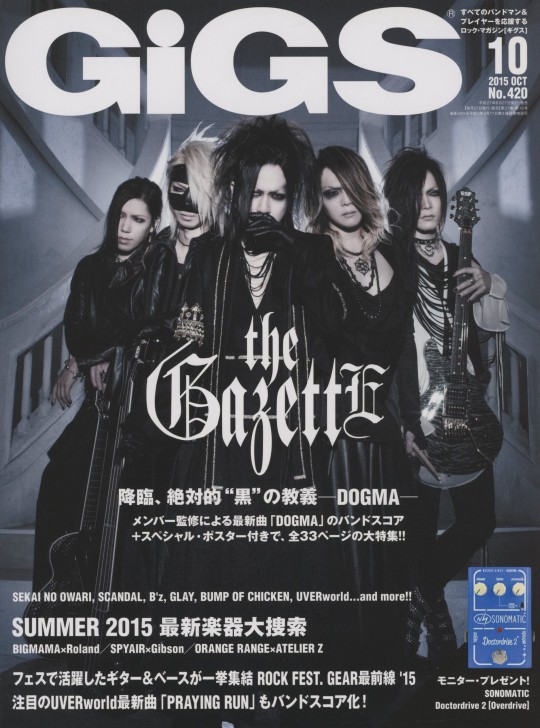

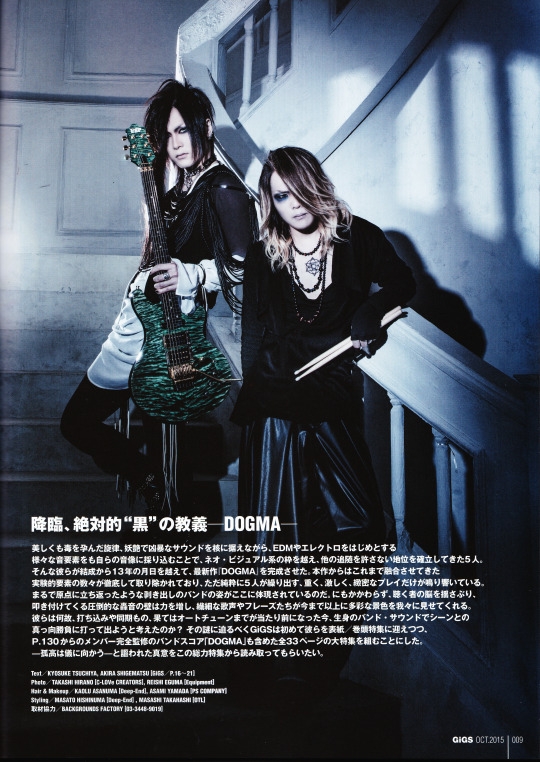

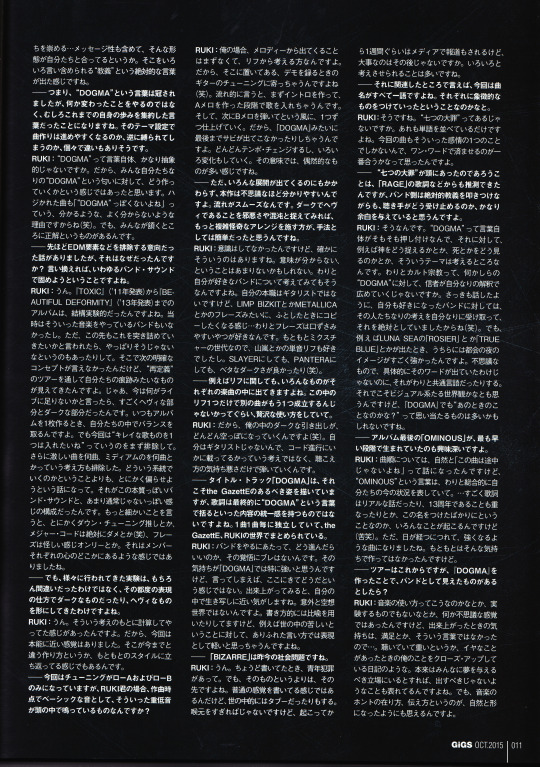
Chapter 1 - RUKI [Vocal]
“DOGMA”, with its intense focus on low frequencies, eliminates external sounds entirely, utilizing only low-A and low-B tunings. As the band’s frontman and primary songwriter, RUKI has always steered the direction of the GazettE. Why, after 13 years since the band’s formation, did they choose to create an album with this kind of sound?
“When the album was finished, I felt it was almost like an exact reflection of myself.”
Interviewer: At the March performance at Nippon Budokan, it was announced that THE BEGINNING OF OMINOUS YEAR, centered around the album DOGMA, would begin. When did the powerful word "DOGMA" first come to mind?
RUKI: Last year, we had a tour titled Redefinition. Among those shows, we had PULSE WRIGGLING TO DIM SCENE, which focused on STACKED RUBBISH (released in 2007) and DIM (released in 2009), so it was around June. However, the word DOGMA itself, including the album cover design, had already existed as early as the beginning of last year. Back then, I hadn’t decided exactly how to use it yet. But as we continued performing live, I began reflecting on the state of our band, our relationship with our fans and the term DOGMA felt very fitting.
When I saw the artwork used for the album cover, it all came together. By that point, the title DOGMA had already been cemented in my mind. For our first song selection meeting, we hadn’t decided on what kind of album it would be yet; we just brought in songs. At that time, I brought in “OMINOUS.” It was during this process that I shared my idea of “DOGMA” with the other members as a direction to aim for in the next selection meeting. From there, everyone started creating songs with “DOGMA” in mind.
There was an early version of BLEMISH, but it had a strong EDM influence, so we set it aside. However, at the final song selection meeting, when we realized we needed one more track, someone suggested bringing that song back and reworking it into a more DOGMA-esque style. By the second song selection meeting, about half of the album was completed.
Interviewer: It’s surprising that you had the artwork’s image in mind so early on. I assume you also thought deeply about the meaning behind “DOGMA.”
RUKI: Yes. First, from the perspective of our public image during live performances, there’s this religious-like aura. At the same time, we’re aware of our somewhat isolated position within the current visual kei scene—we don’t really mix with others. Though, honestly, we don’t want to mix either. Of course, we respect our predecessors in the genre, but we also have a desire to surpass them.
When we considered what kind of band we should be, we realized that there aren’t many bands like us that have maintained this style for 13 years. It’s something natural for us, but if I take a step back and look at it from a bird's-eye view, it feels like our essence keeps becoming denser. In the album, we described this as "unmixable black." For us, delving deeper into that blackness felt like the right path. Our goal was to hand over something absolute to our audience.
The idea of myself as a symbol of divinity, symbol of blackness, resonated deeply with the androgynous figure on the black album jacket. It evokes the image of a cult—one that society might see as misguided, but which worships its own absolutes. That message, that structure, felt perfectly aligned with who we are. From there, the absolute term ‘dogma’ naturally emerged.
Interviewer: In other words, while the word “DOGMA” became the title, it wasn’t about doing something completely different. Instead, it served as a term that encapsulated your journey so far. With that as the theme, did it make the songwriting process easier, or did it feel restrictive? It seems like this could differ for each of you.
RUKI: The word DOGMA itself is pretty abstract, right? So everyone approached it by interpreting what DOGMA meant to them. Songs were rejected for reasons like, “This doesn’t feel like DOGMA,” which is both understandable and a bit vague (laughs). But when everyone agreed on something, that became the “right” answer.
Interviewer: You mentioned earlier that EDM elements were intentionally removed. Why was that? In other words, was it an effort to focus on a more traditional band sound?
RUKI: Yes. From TOXIC (released in 2011) to BEAUTIFUL DEFORMITY (released in 2013), our albums were quite experimental. At the time, there weren’t many bands doing that kind of music. But we questioned whether we wanted to continue pursuing that direction, and the answer was no. While we didn’t have a clear concept for what to do next, through the “Redefinition” tour, we started to see traces of ourselves—what made us who we are.
Then we asked ourselves, “What is the current live experience missing?” And the answer was something much heavier and darker. Whenever we make an album, we usually balance different aspects within ourselves. But this time, we first decided to eliminate the idea of including “at least one clean, melodic song.” We also threw out the approach of trying to balance things like “how many heavy songs, how many medium-paced ones” and so on. Instead of worrying about maintaining a variety, we decided to focus on leaning into extremes.
That’s why the album structure ended up with a sound that felt like a band’s raw essence but also unconventional at the same time. To get into more specifics, we really pushed down-tuning, completely banned major chords (laughs), and insisted on phrases that felt eerie and unsettling. I think these ideas were something that existed within each of the members’ hearts somewhere.
Interviewer: Still, the various experiments you’ve conducted weren’t mistakes. They were ways of shaping darkness and heaviness through different methods of expression at the time, weren’t they?
RUKI: Yeah, there was definitely a calculated aspect to it. But this time, it felt much closer to instinct. That’s what makes the process different from before, and in a way, it also feels like we’ve returned to our original style.
Interviewer: For this album, you’ve used Low A and Low B tunings exclusively. When composing, do those heavy bass tones naturally sound in your head as the foundation?
RUKI: For me, it doesn’t start with a melody but with a riff. So, the tuning of the guitar I use for recording demos often influences the process (laughs). Usually, I’ll begin with the intro, then add the verse, and by that point, I’ve already layered vocals. Then I create the bridge and so on, building one section at a time. That’s why, with a song like DOGMA, the chorus might not even appear until the very end. The tempo keeps changing, and the structure evolves. In that sense, it’s a very spontaneous process.
Interviewer: Despite all these evolving developments, the album is surprisingly cohesive. The flow is seamless. If one considers “darkness” and “heaviness” as themes that suggest evil and chaos, it might have been simpler, in terms of technique, to go for a more convoluted, chaotic arrangement.
RUKI: I wasn’t consciously aware of that, but I think you’re right. There’s not much that feels incomprehensible. Even with bands I admire, I notice that. I’m not a guitarist by trade, but I love riffs that make you want to copy them on a whim, like those from Limp Bizkit or Metallica. I’m from the nu-metal generation, so I also like single-note riffs from bands like YamaArashi. Even with Slayer or Pantera, there’s something great about straightforward classic darkness (laughs).
Interviewer: Speaking of riffs, each track features so many distinct ones that any single riff could serve as the basis for an entirely new song, yet you use them so lavishly.
RUKI: That’s why the dark drawer in my mind keeps getting emptied out bit by bit (laughs). Since I’m not a guitarist, I don’t think in terms of how the riffs fit into chord progressions. Instead, I just play based on how unsettling they sound to me.
Interviewer: The title track, DOGMA, truly captures what the GazettE stands for. However, the lyrics aren’t bound by the term “DOGMA” as a unifying theme. Each song feels distinct, yet they’re all brought together by the world of the GazettE and RUKI.
RUKI: When it comes to this band, there’s no hesitation about the direction we need to take. That resolve is particularly strong in “DOGMA.” But to put it bluntly, it’s not about how things have suddenly come together here. When the album was finished, I felt it was almost like an exact reflection of myself. It’s surprisingly not a fantastical world. Though I use metaphors in my writing, when addressing topics like the struggles of society, I feel that expressing them in clichéd ways would come across as too superficial.
Interviewer: For example, you’ve mentioned that BIZARRE reflects recent social issues.
RUKI: Yeah. While I was writing it, there was a youth crime incident happening. But it’s not so much about the event itself as what comes afterward. I write about it from what feels like an ordinary perspective, but to society, it might be a taboo. It’s like that saying “once it’s out of sight, out of mind”—for about a week after an event, the media covers it, but the important part is what happens afterward, isn’t it? These kinds of things make me think a lot.
Interviewer: On a related note, this time all the track titles are single words. It seems like each word was chosen to be highly symbolic.
RUKI: That’s right. You know the concept of the “seven deadly sins”? They’re just listed as single words, aren’t they? The songs on this album similarly represent just one emotion each, so I felt that single-word titles suited them best.
Interviewer: The influence of the “seven deadly sins” concept is apparent, especially in lyrics like those in “RAGE.” However, while the band delivers its absolute doctrine, it feels like you leave a lot of space for listeners to interpret things in their own way.
RUKI: That’s right. The word “DOGMA” itself is inherently imposing. So it’s about how you interpret things like God, or how you perceive death—those are the themes being explored. Cult religions, for example, often take some form of “DOGMA” and have their followers spread it through their own interpretations, don’t they? Like I mentioned earlier, when I fell in love with certain bands, I absorbed their messages in my own way and took them as absolute (laughs).
But, for example, when songs like LUNA SEA’s “ROSIER” or “TRUE BLUE” were released, for us, they conjured a strong image of the city at night. It’s strange because those words weren’t explicitly referencing that, yet they became a shared language of sorts. I think that’s the essence of the visual kei world—the ability to evoke such collective imagery. Similarly, with DOGMA, listeners might connect it to certain moments in their lives.
Interviewer: It’s fascinating that OMINOUS, the final track on the album, was one of the first songs created.
RUKI: When deciding on the track order, it naturally felt like “this song doesn’t belong in the middle.” The word OMINOUS represents our current state as a band. The song has real, raw lyrics and coincides with our 13th anniversary. It feels like naming it that brought about various events (laughs). Over time, the track has grown stronger. Initially, we didn’t create it with those emotions, but it ended up carrying them.
Interviewer: As you head into the tour, what do you think creating “DOGMA” has revealed about the band?
RUKI: It’s made me think about how music is meant to be used—not as an experiment but as a medium for genuine expression. When it was finished, my feelings weren’t ones of satisfaction or anything like that. Listening to it feels heavy—it’s like a diary zooming in on my thoughts during tough times.
Normally, we’re expected to inspire dreams, but some of what’s conveyed here might not align with that role. But in a way, I feel like the essence of music—how it truly should exist and how it should be conveyed—naturally took form through this process.

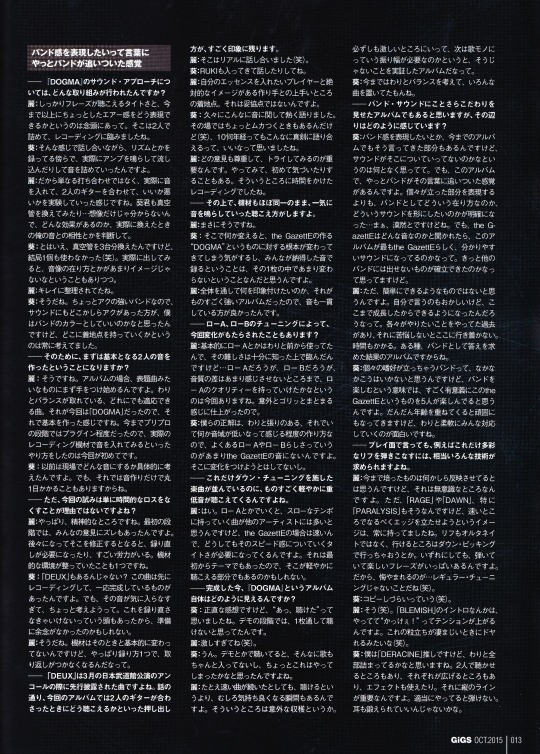
Chapter 2 - Uruha [Guitar] & Aoi [Guitar]
The raw and unfiltered band sound, crafted by the clash of all five members’ music, forms the foundation of “DOGMA.” To enrich and deepen the essence of this work, Uruha and Aoi wrote four tracks: “DERACINE,” “WASTELAND,” “GRUDGE,” and “PARALYSIS.” As guitarists, how did the two of them approach this album?
Interviewer: What kind of approach did you take toward the sound of DOGMA?
Uruha: We focused on achieving a tight sound where each phrase could be heard clearly, while also exploring how to incorporate a subtle sense of airiness, more so than ever before. That was something the two of us worked on extensively before heading into recording.
Aoi: While discussing things like that, we would be recording the rhythm parts, and at the same time, we’d crank up the amps and pour the sound into the mix, refining it bit by bit.
Uruha: So it wasn’t just a simple meeting. It felt more like we were experimenting by actually playing and layering the sounds of our two guitars, judging whether it worked or not. Aoi even swapped out vacuum tubes… You can’t really understand the impact just by imagining it. So we’d listen to the changes and judge how well it meshed with my sound.
Aoi: That being said, I replaced three tubes, but in the end, we didn’t use a single one (laughs). When I actually heard the sound, it didn’t quite match the image I had in mind for the tonal balance.
Uruha: Everything ended up sounding very clean and organized.
Aoi: Yeah. Since we’re a band with a fairly strong “bite,” I thought having a bit of grit in the sound would be better for expressing our unique color. But I was always thinking about where to find the right balance for the final result.
Interviewer: So, does that mean you first focused on creating the foundation of the two guitars' sounds?
Uruha: That’s right. When working on an album, we usually start with something like the title track—a song that has a relatively well-balanced sound and can adapt to anything. This time, that song was "DOGMA," so we built the foundation around that. Up until now, the pre-production stage mostly involved plugins, but this time, we actually used the recording equipment during pre-production to get the sound. That was a first for us.
Aoi: Previously, we’d only think about what kind of sound we wanted on the spot during the session. But that approach could mean spending an entire day just crafting a single sound.
Interviewer: But, the purpose of this new approach wasn’t simply to save time, right?
Uruha: It’s about the mental side of things. At the beginning, there were some discrepancies in everyone’s opinions. If we had to fix those differences later, it would mean re-recording and putting in an enormous amount of effort. Having the right technical setup from the start was a big factor as well.
Aoi: DEUX might have been part of it too, don’t you think? We had recorded that song earlier and thought it was finished. But I just couldn’t stand the sound of it, so we decided to rethink things. Knowing that we might have to re-record it probably pushed us to prepare even more thoroughly.
Uruha: That’s true. The equipment itself hasn’t changed much since then, but just the way you record something can lead to results you can’t take back.
Interviewer: DEUX was performed as an encore during your Nippon Budokan show in March, right? As you mentioned, the way the two guitars blend on this album is particularly striking.
Uruha: That’s something we discussed in detail (laughs).
Aoi: Ruki also joined in on those discussions.
Uruha: It’s about finding the ideal balance between a player’s desire to add their essence and a creator’s absolute vision. It’s not about compromise.
Aoi: It’s been a long time since I’ve had such passionate discussions about sound. It can be frustrating in the moment (laughs), but even after all these years, being able to have such serious conversations is something I really appreciate.
Uruha: It’s important to respect all perspectives and try things out. There are insights you can only gain after trying things. This recording process really emphasized that.
Interviewer: And despite all this effort, the sound seems unified, as if the equipment remained consistent throughout.
Uruha: That’s right.
Aoi: If we were to change something, it feels like it would fundamentally alter what the GazettE’s "DOGMA" is supposed to represent. Recording with a sound that everyone agreed upon also meant that the tonal consistency across the album wouldn’t fluctuate too much.
Uruha: Since the album had such a strong and clear theme throughout, keeping the sound consistent was the best choice.
Interviewer: Did the use of low A and low B tunings contribute to this evolution?
Uruha: We’ve used low A tuning before, so we were aware of its challenges. But this time, I think we managed to elevate the quality to the point where you can’t distinguish much between low A or low B in terms of tonal quality. It came together in a surprisingly solid way.
Aoi: Our "right" answer tends to be a sound that’s bright and taut, yet gives a subtle impression of being lower in range. The typical characteristics of low A or low B tunings don’t really fit the GazettE’s sound, so we didn’t aim to emphasize them either.
Interviewer: It’s remarkable how the songs employ such heavy downtuning yet still deliver low-end sounds with such a light, effortless quality.
Uruha: Yeah. When artists use low-A tunings, they often go for slower-tempo songs. But in the GazettE’s case, the songs are fast, so we needed a tightness that could keep up with that speed. That was something we set as a theme from the start, and I think it contributes to why the sound feels so light and agile.
Interviewer: Now that it’s finished, how do you see the DOGMA album as a whole?
Aoi: Honestly, my first reaction was, “Ah, I can listen to it.” During the demo phase, I didn’t think I’d be able to listen to it all the way through.
Uruha: It was too intense (laughs).
Aoi: Yeah. In the demo stage, the vocals weren’t fully recorded, and I wondered if we had gone too far.
Uruha: Even when fast-paced tracks follow one after another, there are moments that don’t just feel listenable—they actually feel good. That was an unexpected discovery for me. This album proved that it’s not necessarily essential to switch between heavy tracks and more melodic ones to create variety.
Aoi: In the past, we usually aimed for balance by including a variety of songs.
Interviewer: This album seems to emphasize the band’s sound more than ever. How do you feel about that?
Aoi: We’ve talked about wanting to express a “band feel” on previous albums, but I always felt like our sound hadn’t fully caught up to that idea. With this album, though, I feel like the band has finally caught up to that concept. Instead of focusing on highlighting individual parts, we really clarified what it means to exist as a band and what kind of sound we wanted to create as a whole. It’s still a bit abstract, but if someone asked, “What is the GazettE’s sound?” I think this album represents it in the clearest, most GazettE-like way. I also feel like we’ve established something unique that other bands wouldn’t be able to replicate.
Uruha: That said, this isn’t something that can be easily achieved. It's weird for me to say it, but I think we were only able to do this because we’ve grown so much as a band. Each of us had a period in the past where we were focused on doing what we wanted individually. Without struggling through that phase, we wouldn’t have arrived here. It takes time. In a sense, this album is the result of seeking answers as a band.
Aoi: Bands where the individual members’ preferences dominate can’t really pull something like this off, I think. But I think the five of us really enjoy being in the GazettE together. Even as we grow older and maybe more set in our ways, everyone is surprisingly flexible. That’s something I find really interesting.
Interviewer: Speaking of your playing, mastering such a wide variety of riffs must have required a considerable amount of technical skill, right?
Uruha: I think we naturally reflect what we’ve built up over time, even if we’re not always conscious of it. For tracks like “RAGE,” “DAWN,” and especially “PARALYSIS,” I always had this image of trying to emphasize sharpness and clarity in the faster sections. For example, instead of relying on alternate picking, I’d push to use down-picking where possible. But in any case, the riffs are genuinely fun to play. What I regret, though, is... that it’s not in standard tuning (laughs).
Aoi: Makes it harder for people to copy (laughs).
Uruha: Exactly (laughs). Take the intro of “BLEMISH”, for instance—playing it gets me hyped, like, “This is so cool!” It’s that moment when the sound is crisp and precise, and you can really show off (laughs).
Aoi: My favorite is “DERACINE.” I think it has a little bit of everything. There are moments where we play together, times where we each expand the sound in our own way, and opportunities to use effects. Plus, the vertical alignment of the parts is crucial. If you’re sloppy, you can’t pull it off. It’s a challenge for your ears, too, so I think it’s good practice.

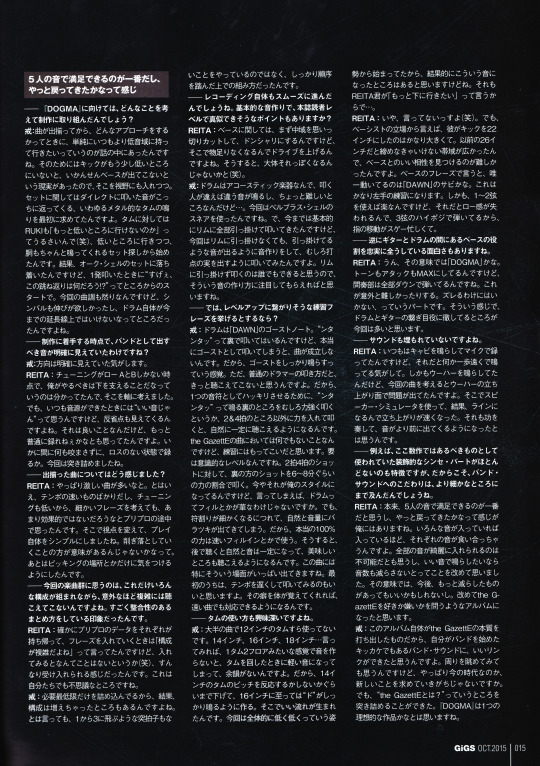
Chapter 3 - REITA [Bass] & Kai [Drums]
The album “DOGMA” features an unprecedented low-end heaviness that spans its entirety. For REITA and Kai, who are responsible for anchoring the band’s sound, this required heightened awareness and innovation in both playing and sound production. In this chapter, we explore what the two of them focused on during the album’s creation.
Interviewer: What kind of thoughts went into the production process for DOGMA?
Kai: Once we had the tracks ready, we talked about how to approach them. One key idea was to bring more focus to the low-end frequencies than usual. To achieve that, the kick drum needed to sit lower in the mix, because otherwise, the bass wouldn’t come through clearly. With that in mind, I started by considering the drum setup. Initially, I aimed for toms that would give a more direct, metallic resonance, like what you often hear in metal. RUKI was quite particular, saying, “Can’t you go lower?” (laughs). So, we began with finding a kit that could deliver a low sound while still allowing the shells to resonate properly.
We ultimately settled on an oak-shell kit. When I hit it for the first time, I thought, “Whoa, what is this incredible rebound!?” That was the starting point. The nature of the tracks this time also called for cymbals with more sustain, so it felt like I couldn’t stick to the same approach as before. The drums had to evolve beyond the familiar.
Interviewer: It seems that by the time you started production, you already had a clear vision for the sound the band wanted to create.
Kai: Yes, I feel like we had a clear direction.
Reita: When the tuning is as low as A or B, I knew my job was to provide a solid foundation for the sound. That became my focus. Whenever we finish recording, I always think, “This sounds great,” but I also notice areas to improve. That’s a good thing, of course, but at the same time, I found myself wondering if we couldn’t record more simply. How do we capture the sound with as little interference and loss as possible? That’s what we really honed in on this time.
Interviewer: How did you feel about the finished tracks?
Reita: I thought, “Wow, there are a lot of intense tracks!” But since the tempos are fast and the tuning is low, I realized midway through the pre-production process that intricate phrases wouldn’t be very effective. So, I shifted my approach to make the playing itself simpler. Stripping things down felt more meaningful. After that, I just focused on details like where I placed my picking hand.
Interviewer: Despite the variety in these songs' structures, they don’t sound overly complex. Instead, they feel like they’ve been tied together with a great sense of cohesion.
Reita: That’s true. During pre-production, when we took the demo data home to work on our parts, we’d say, “The structures are pretty complex,” but once we actually added the parts, it all came together surprisingly smoothly (laughs). It felt natural, which was a bit of a mystery even to us.
Kai: I think it’s because we packed in only the essentials. As a result, some of the arrangements became more elaborate, but it’s not like we jumped randomly from point A to point C. The songs follow a clear progression, which made the structures feel logical.
Interviewer: Did the recording process itself go smoothly? Are there any techniques for basic sound production that our readers might be able to replicate?
Reita: For the bass, the first step is to cut the mid-range completely to create a scooped sound. That can feel a bit lacking, so you boost the drive, and it starts to sound right (laughs).
Kai: Drums are acoustic instruments, so the sound changes depending on who’s playing, which makes it a bit tricky. This time, I used a bell brass snare drum. Normally, I play with all the hits catching on the rim, but this time I worked on creating a tone that sounded like it was caught on the rim even when it wasn’t. Instead, I focused on producing a sound that emphasized the core of the drum hit. Since anyone can try playing without using the rim, I’d recommend experimenting with that kind of sound design.
Interviewer: Are there any practice routines you’d recommend that might help with skill improvement?
Kai: For drums, I’d recommend the ghost notes in "DAWN." The notes played in the background go like "nta nta-t." While they’re ghost notes, if you treat them as true "ghosts," the song won’t work. The key is to make those ghost notes resonate clearly. For most drummers, these notes might not even be audible, but to make them distinct, you need to hit those background beats with more force—almost as if emphasizing the notes that aren’t on the primary 2 & 4 beats. Doing this makes the sound feel steady and even. For the GazettE’s songs, this isn’t anything extraordinary, but it’s perfect for practice.
It comes down to intentional focus. While your usual power goes to the 2 & 4 beats, you should apply around 60-80% strength to the offbeats. This has become my personal style now. Drumming often shines through fills, but as the note groupings get denser, volume inconsistencies start creeping in. So, I save my true 100% effort for fast fills, which, when listened back to, helps everything sound natural and balanced, with all the details standing out clearly. This track, in particular, is packed with opportunities to practice that approach. Initially, try playing it at a slower tempo. Once your body adapts, it will naturally work for faster songs too.
Interviewer: Your tom usage is also fascinating.
Kai: In most of the songs, I don’t even use the 12-inch tom. It’s more like a setup of one tom and two floor toms—14-inch, 16-inch, and 18-inch. If I included the smaller tom, the overall sound would get too light and lose its resonance. To avoid that, I tuned the 14-inch tom as low as it could go while still responding clearly. For the 16-inch, I tuned it so it firmly produced a deep "do" sound. This approach created a really good flow.
Because we started this album with the concept of going lower and lower overall, this setup naturally led to the final sound. Part of this was because Reita kept saying he wanted to go even lower…
Reita: No, I didn’t say that! (laughs) But from the bassist’s perspective, Kai switching to a 22-inch kick drum was a huge change. With the previous 26-inch, there was too much range that needed to be tightened, which made it harder to create a good match with the bass.
For basslines, the only part that really moves around is in the chorus of "DAWN." That section is great for practicing left-hand techniques. You could make it easier by playing it on the first and second strings, but you’d lose the low-end presence, so I play it on the third string in the higher positions. This makes the finger movements insanely busy.
Interviewer: There’s also a satisfying sense of how the bass holds its ground between the guitars and drums.
Reita: Yes, DOGMA exemplifies that. I maxed out both tone and attack, especially in the interlude, where I played everything with downstrokes. It’s harder than it sounds because you can’t afford to let the timing slip even a little. There are a lot of moments on this album where I took on the role of bridging the drums and guitars.
Interviewer: The bass sound doesn’t feel buried at all.
Reita: Usually, I’d run my sound through a cabinet and mic it, but that often feels like the sound is coming from a slight distance. I was also using a woofer, but for this album, the woofer’s responsiveness was causing issues. So, I switched to a speaker simulator. That resulted in a line-out setup, which improved the attack and brought the sound forward more prominently. I think that worked really well to make the bass stand out.
Interviewer: One of the defining features of this album is the absence of decorative synth parts, which were used in some of your recent works. This seems to have pushed your focus on the band sound into even finer detail.
Reita: I think the most satisfying thing is to feel content with the sound the five of us create. It feels like we’ve finally returned to that. The more layers you add, the more the individual sounds clash. It’s impossible to get everything to sit perfectly in the mix. This time, I realized again that if we want a good, clean sound, we have to reduce the number of elements. Going forward, we might strip things back even further. I feel like this album challenges listeners to decide whether they truly like the GazettE or not.
Kai: This album is a true representation of the GazettE’s essence. It ties back to why I started playing in a band in the first place—the joy of creating a real band sound. Looking around, I think there’s a tendency these days to chase the new and experimental. But we really dug deep into “What is the GazettE?” with this work. I think "DOGMA" turned out to be an ideal album in that respect.




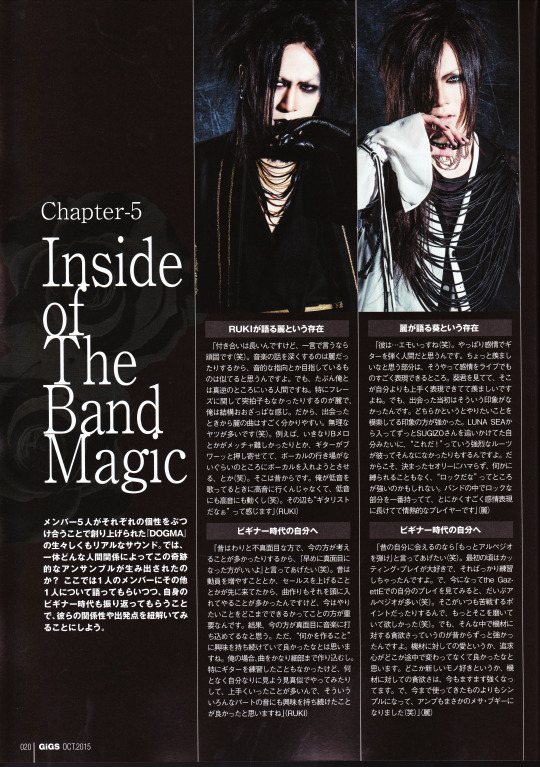

Chapter 5 - Inside of The Band Magic
The raw and real sound of DOGMA was created through the clashing and blending of the unique personalities of The GazettE's five members. What kind of relationships made this miraculous ensemble possible? In this chapter, we have each member talk about one of the others while also reflecting on their early days. Through this, we aim to unravel their relationships and their starting points.
RUKI on Uruha
“Our relationship goes back a long way, but if I had to sum him up in one word, he’s stubborn (laughs). When it comes to in-depth discussions about music, Uruha is usually the one I talk to. I think our musical inclinations and goals are similar, but he’s probably the complete opposite of me in many ways.
Especially with his phrasing—Uruha’s ideas are often experimental, while I tend to be more rough and ready. So, from the moment we met, his songs were always very distinctive. A lot of them were also… difficult (laughs). For example, suddenly throwing in a really challenging B melody, or having the guitar surge forward so much that the vocals barely have room to fit in. And then he expects me to make it work somehow (laughs). That’s something that hasn’t changed since back then.
Even when I’m singing in a low register, he’ll have me shift to both lower and higher tones. In moments like that, I really feel, ‘This guy is such a guitarist...’”
To my beginner self (Ruki):
“I used to be pretty laid-back, so I’d tell my younger self, ‘Start taking things seriously sooner’ (laughs). Back then, I was more focused on increasing our audience or boosting sales, so I often made music with that in mind. Now, what matters most is how far we can go with what we want to do.
As a result, I feel like I’m more dedicated to music now than ever before. At the same time, I’m glad I’ve always stayed interested in creating something. I’m the kind of person who likes to get deep into the details of a song. Even though I never formally practiced guitar, I often tried to figure things out by watching others or experimenting on my own. Those experiences taught me a lot, and I’m glad I kept exploring all the different elements of sound.”
Uruha on Aoi
“He’s… very emotional (laughs). I think he’s someone who plays guitar with his feelings. I honestly envy his ability to express so much emotion, especially during live performances. Watching him, I feel he’s better at expressing himself than I am, and that’s something I admire.
But that wasn’t my impression when we first met. Back then, he seemed more like someone who was still figuring out what he wanted to do. Unlike me, who had this strong, ‘This is it!’ moment from my LUNA SEA roots and obsession with Sugizo, Aoi didn’t seem to have one defining influence.
Because of that, he’s not bound by any particular rules or conventions, which might make him more ‘rock’ in a way. Among the band members, he has the strongest rock spirit. Overall, he’s an incredibly emotional and passionate player.”
To my beginner self (Uruha):
“If I could meet my younger self, I’d say, ‘Practice your arpeggios more!’ (laughs). Early on, I loved cutting-style guitar playing and practiced that nonstop. But looking at my parts in The GazettE now, there are so many arpeggios (laughs). That’s always been a challenging area for me, and I wish I’d worked on it more back then.
On the other hand, I’ve always had a strong curiosity about gear, and I’m glad that hasn’t changed. My love and passion for equipment have only grown stronger over time. I’ve also started simplifying things—I’ve even switched to a Mesa Boogie amp (laughs).”
Aoi on Reita
"REITA gives a sense of reassurance; he’s someone you can rely on. In that sense, he’s similar to Kai. As a person and as a player, he gives the impression of someone with a strong core. He’s consistent in what he says, and I always feel secure knowing my performance is supported by him. Of course, I trust all the members, but REITA is the one who gives me the most peace of mind... Well, I haven’t really thought about it much (laughs).
At the same time, while he’s steadfast, he’s also very skilled. If I request a specific phrase, he always brings it to life. Sometimes I just give a vague idea, and he still manages to shape it into something tangible. That skill has been a constant since the early days.”
To my beginner self (Aoi):
“Oh man, I’d definitely tell myself, 'You should take music more seriously’ (laughs). I’ve always felt like I was a step behind the other members. I’d watch them, figure out where I was lacking, and work on improving those areas. If I could meet my younger self, I’d tell him to be more serious from the start.
Looking back, meeting the other members was such a pivotal moment. If it weren’t for them, I don’t think I’d even be doing music. I originally started music as a hobby and thought I might turn it into a career someday, but I didn’t understand it as deeply as I do now. The inspiration and stimulation I’ve gotten from them have shown me the joy of being in a band and the depth of music.”
REITA on Kai
"When I first met Kai, I thought, 'He seems like an interesting guy.’ He was barefoot (laughs) and held his drumsticks the opposite way, saying, 'This feels heavier, so it’s better!’ I’ve always liked quirky people, so I thought we might get along. But as time went by, he became increasingly serious.
Drums are the foundation of everything, aren’t they? Whether you can fully trust someone to handle that responsibility is crucial, and I now place absolute trust in him. Kai’s also the most meticulous and detail-oriented among us. When he decided to take on the role of leader, he really took responsibility and started guiding everyone. Since I’m not the type to lead, I’m super grateful for that."
To my beginner self (REITA):
"I’d tell myself, 'Start with fingerpicking.’ Coming from a pick-playing background, switching to fingerpicking felt like learning a completely different instrument. If I’d been doing both from the start, I think my range as a player would’ve been broader.
That said, at the core, I feel glad I stuck with playing bass. I’ve never been someone who sticks to things for long, and bass is the only thing I’ve kept doing. It feels like picking up the bass shaped my personality and even my identity. It’s more than just an instrument; it’s part of who I am. And honestly, I only want to play bass as part of The GazettE. Outside of that, I don’t feel any desire to play."
Kai on RUKI
"RUKI doesn’t compromise on anything. There’s no ‘This is good enough’ for him; He always has a clear vision of what he wants, and when he records vocals, he knows exactly what he’s aiming for. He keeps challenging himself to reach that level, which is really impressive.
There are times when I think, ‘What was wrong with that take?’ but RUKI always has a reason—he’s striving for something even better. His ability to envision his art is truly remarkable. When we first met, I just thought he had a wide vocal range and a great voice. But as we worked together, I saw him grow rapidly as an artist, constantly raising the bar for himself."
To my beginner self (Kai):
"There’s so much I’d want to tell my younger self (laughs). First and foremost, I’d say, ‘Be more disciplined!’ Honestly, I didn’t think about much back then. I’d tell myself to focus more on what matters and to clarify my goals.
That said, one thing I’ve always enjoyed—then and now—is interacting with people. Meeting others and learning from them has been a constant in my life. That’s how I’ve grown—absorbing what I can from those around me. That hasn’t changed. Even now, on tours, I enjoy chatting with staff and getting to know them. While it’s not directly related to playing an instrument, building relationships and learning from others has been a consistent part of who I am."
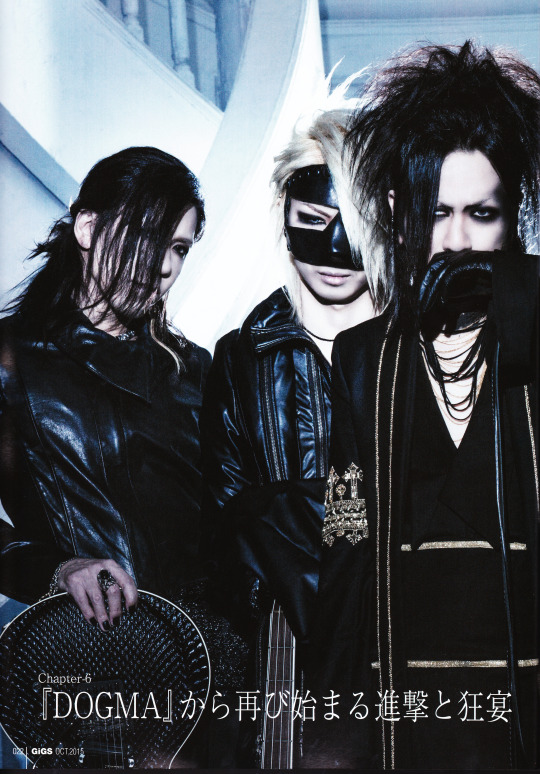
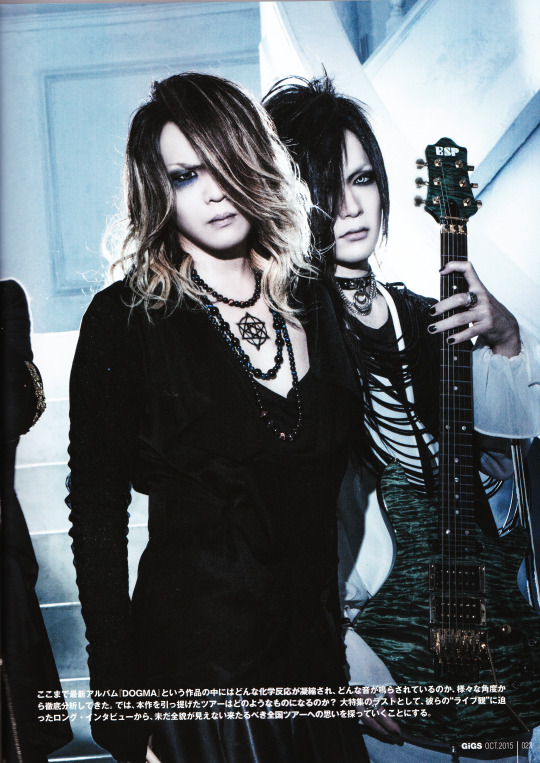

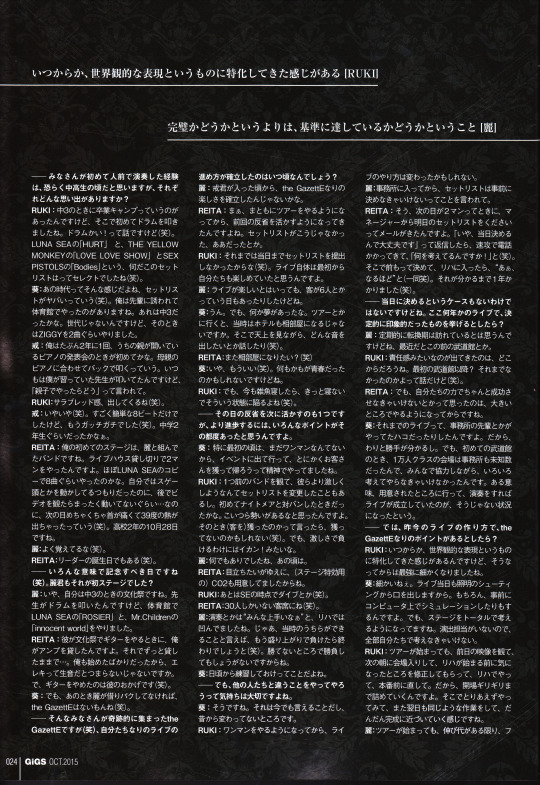
Chapter 6 - The Resurgence and Frenzy Beginning Again with DOGMA
So far, we’ve thoroughly analyzed the chemical reactions and sounds condensed into the latest album, “DOGMA,” from various perspectives. But what will the tour accompanying this work look like? In this in-depth feature, we explore their thoughts on live performances in a long interview, aiming to uncover their sentiments toward the upcoming nationwide tour, the full scope of which is still unknown.
"At some point, we started focusing on expressing a cohesive world view." - Ruki
"It’s not so much about whether it’s perfect, but whether it meets the standard." - Uruha
"We’ve been active for a long time, so the amount of things we need to check has grown to an immense level over time. As a result, it’s become more intricate." - Aoi
"The feeling that we had to succeed on our own really hit when we started performing at larger venues." - Reita
"As the essence of what the GazettE is, we aim to present something truly convincing and powerful." - Kai
Interviewer: Everyone’s first time performing in front of an audience was likely during your middle or high school days. What kind of memories do you have of that experience?
RUKI: It was during a graduation camp in my third year of middle school. That was the first time I played drums. Yes, drums! (laughs) Quite a surprise, right? (laughs). I played HURT by LUNA SEA, LOVE LOVE SHOW by THE YELLOW MONKEY, and Bodies by the SEX PISTOLS. It was such a bizarre setlist (laughs).
Aoi: That era had a lot of wild setlists like that (laughs). For me, I was invited by an upperclassman to perform in the school gym. I think I was in my third year of middle school too. We weren’t exactly of the generation, but we played two ZIGGY songs.
Kai: I think my first time was at a piano recital my parents organized every two years. My mother played piano while I accompanied on drums. Normally, my teacher would play the drums, but they suggested, “Why not do it as a parent-child duo?”
RUKI: That’s giving major prodigy vibes (laughs).
Kai: No, no, nothing like that (laughs). It was just a very simple 8-beat pattern, but I was totally stiff from nerves (laughs). I think I was in my second year of middle school.
REITA: My first performance was with a band I was in with Uruha. We rented out a live house and did a two-band show. We played about eight songs, mostly LUNA SEA covers. I thought I was moving my head a lot during the performance, but when I watched the video later, I was barely moving (laughs). Despite that, my neck hurt like crazy the next day, and I came down with a 39°C fever (laughs). It was October 28th of my second year of high school.
Uruha: You remember the exact date? (laughs).
REITA: It’s also the band leader’s birthday (laughs).
Interviewer: It sounds like that day was memorable in many ways (laughs). Was that also Uruha’s first stage?
Uruha: No, my first was during my middle school culture festival. A teacher played the drums, and we performed LUNA SEA’s “ROSIER” and Mr.Children’s “innocent world” in the gym.
REITA: When he was preparing to play guitar for the cultural festival, I lent him my amp. And then he ended up holding onto it for ages… At that time, I had just started playing too, and you know, electric guitar without an amp isn't very fun. So because of him, I quit playing guitar (laughs).
Aoi: But if Uruha hadn’t stolen that amp back then, there would be no GazettE (laughs).
Interviewer: It’s remarkable how all of you came together in the GazettE (laughs). When did you establish your current approach to live performances?
Uruha: I think it was after Kai joined that we solidified what made the GazettE's shows fun.
REITA: Yeah, once we began doing proper tours, we started reflecting on the previous shows and learning from them. Things like, “That setlist didn’t work,” or “This part could’ve been better.”
RUKI: Before that, we wouldn’t even finalize the setlist until the day of the show (laughs). But even from the beginning, I think we always managed to enjoy the performances ourselves.
Uruha: Even though live shows were fun, there were days when we only had six people in the audience.
Aoi: Yeah, but we had dreams. When we went on tours, we’d share hotel rooms, right? We’d lie on our backs staring at the ceiling, talking about what kind of music we wanted to create (laughs).
REITA: Do you want to go back to sharing rooms? (laughs)
Aoi: Nah, I’m good (laughs). Maybe those days were just all part of our youth.
RUKI: But even now, if we all slept in the same room, we’d probably end up talking all night, about the same kind of stuff (laughs).
Interviewer: Reflecting on each show and applying that to the next one is important, but there must have been specific turning points that helped you all improve further along the way.
Aoi: Especially in the beginning, since we didn’t have solo gigs yet, we’d participate in events with this mindset of, “Let’s win over the audience.”
RUKI: There were times when we’d watch the band before us and decide on the spot to make our setlist more intense. I think that happened the first time we played a show with Nightmare. I remember thinking, “Wow, these guys have so much energy.” Did we win over the crowd that time? Maybe not (laughs). But we weren’t about to lose in terms of intensity!
Uruha: Back then, anything went.
REITA: We even had CO2 effects (stage pyrotechnics) because we just wanted to stand out.
RUKI: We’d start diving into the audience during the intro SE (laughs).
REITA: Into a crowd of 30 people (laughs).
Uruha: When it came to rehearsals, I’d often feel disheartened, thinking, “Wow, everyone else plays so well.” So at that point, the only thing we could do was focus on not losing in terms of energy and excitement (laughs). There was no point in competing in areas where we couldn’t win.
Aoi: That just means you’ve got to practice more on a daily basis.
Interviewer: Still, having that mindset of wanting to do something different from everyone else is important, isn’t it?
Aoi: Definitely. That’s something that’s still true for us, and it hasn’t changed since back then.
RUKI: I think our approach to live performances changed once we started doing one-man shows.
Uruha: When we joined our agency, they told us we needed to finalize the setlist in advance.
REITA: Right, there was this one time before a two-band show when the manager emailed us, asking for the setlist. I replied, “Don’t worry, we’ll decide it on the day,” and immediately got a phone call. The manager was like, “What are you even thinking?!” (laughs). When we finally started deciding the setlist ahead of time and then rehearsed it, we were like, “Ohhh, this makes sense” (everyone laughs). It took us about a year to figure that out (laughs).
Interviewer: Deciding on the day isn’t entirely unheard of, but looking back, were there any particularly memorable performances in recent years?
Uruha: I feel like turning points come to us periodically. Recently, it would have to be our show at Budokan.
RUKI: I wonder when we started to feel a sense of responsibility. Maybe after the first Budokan show? Not that we didn’t have any before that (laughs).
REITA: The realization that we had to succeed through our own abilities really came when we started playing in larger venues.
Aoi: Before that, our shows were often at venues where senior bands from our agency had performed, so we had a pretty good idea of how things worked. But when we first played Budokan, a venue that holds around 10,000 people, it was uncharted territory even for our agency. We had to collaborate and think things through carefully. In a way, up until then, we could simply show up to a pre-prepared venue, play our set, and the show would come together. But that dynamic changed. In a way, we’d been able to just show up, play, and the live would work. But that was no longer the case.
Interviewer: In terms of your recent approach to creating live shows, what would you say is unique to the GazettE’s style?
RUKI: At some point, we started focusing on expressing a cohesive world view. Since then, everything has become insanely detailed.
Aoi: Yeah, it’s super detailed. Even on the day of the show, we’ll weigh in on things like lighting adjustments. Of course, we also use simulations on computers beforehand. But now, we think of the entire stage as a unified production. Since we don’t have a director for staging, we have to handle everything ourselves.
RUKI: Even after the tour starts, we watch footage from the previous night, head to the venue early the next morning, and make adjustments to anything that caught our attention before rehearsals begin. We test those changes during rehearsal, tweak them again before the show, and work right up until just before the doors open. It’s a process of constantly refining things—trying them out, then repeating the same process the next day. Little by little, it gets closer to what we want.
Uruha: Even after the tour starts, as long as there’s room for improvement, there’s a massive amount of things to check, which inevitably makes everything more detailed. We keep making changes all the way up to the final show.
RUKI: We’re particular even with individual songs. For example, from the opening SE, the intro, and into the verse, we create a mood, layer by layer. If we had about a month to prepare, I think we could do everything perfectly, but that’s not usually the case. Of course, we delegate where we can, but when it comes to elements critical to the overall atmosphere, there’s no room for compromise. Recently, there’s the matter of those post-show announcement videos, right? We even get involved in things like the timing of the blackout before those play (laughs). It’s all about whether it gives us goosebumps or not—that’s the deciding factor.
Interviewer: You’re also very particular about details like the number of seconds between songs during a performance, right?
RUKI: Right. So for example, there’s a blue blackout where the members can still see their equipment, but even for the moment when it shifts to complete darkness, we’ll have the crew cue it precisely.
Uruha: We’re very particular about the timing of those cues.
Kai: We have so many discussions with both the band members and the staff that when something doesn’t go as planned during a show, everyone notices.
RUKI: Like if the timing for creating a silhouette is off or the shadow doesn’t appear properly (laughs). But we’re lucky to have a staff that keeps up with all this… Whether they enjoy it or not, I can’t say (laughs).
Kai: They’ve said it’s rewarding, even though it’s not easy. We’re really grateful to have such dedicated staff.
Interviewer: That level of detail could be described as perfectionism, wouldn’t you say?
RUKI: It’s less about what the audience thinks and more about whether it feels right to us.
Uruha: It’s less about being perfect and more about meeting our standards.
RUKI: A live show is like a live-action version of what’s on a CD. Everyone has an image of the colors and scenery they imagine when they listen to the music. If it’s supposed to feel like a night sky, but you have red lights, that doesn’t make sense. It’s that kind of abstract balance we’re always working with.
Interviewer: As a vocalist, what’s your approach to these live performances?
RUKI: It’s about whether I can immerse myself in it. Whether the transition from the previous song to the next flows naturally, whether I can switch seamlessly, whether I can fully embody and perform the song, and whether I can sing it completely. That’s all it comes down to for me, whether the live went well or not.
Interviewer: How about the instrumental members?
Aoi: I need to stay calm; otherwise, things get completely chaotic for me. It’s about how much everyone helps me stay focused during the live performance (laughs). It’s not about the members—it’s more about technical issues, like equipment power not being on. Those things really affect me, so I check those details pretty rigorously. The moment I arrive at the venue in the morning, I head straight to my gear to make sure everything’s in order.
Interviewer: So thorough preparation is key.
Aoi: Definitely. But I also want to keep things mentally light, so I try not to change too much from my usual routine.
Uruha: I’m somewhat similar to RUKI in that my focus is whether I can fully immerse myself in the music. When I’m fully in it, it’s not about whether I’m having fun or not—it’s more that my feelings are on a completely different level. My concentration is higher, and I feel like I’m truly experiencing the zone. Those are the moments when I feel a real sense of fulfillment. During a tour, it’s about discovering an environment that allows for that kind of immersion. It’s not something I can always control myself, but right now, that’s what I value most.
REITA: For me, the ultimate goal is to walk away feeling refreshed, but to get there, I want to avoid any stress during the performance. Physical discomfort tends to have the biggest impact—things like not being able to plant my feet properly can throw me off. To address that, I started warming up about 30 minutes before the show—stretching and light muscle training. It’s made a big difference. Once the performance starts, it’s all about how much I can sweat. If I don’t get drenched and completely messy early on, I can’t fully immerse myself. Being in that state keeps me from overexerting myself unnecessarily.
Kai: Like everyone else, I want to fully focus on the performance and channel my emotions into it. But at the same time, I want things to go as planned. For instance, if there’s a venue where certain lighting isn’t available, I need to know that everyone—both the staff and the band members—understands this limitation. If someone doesn’t know or forgets, the moment something unexpected happens, it’s like, “Whoa, what just happened!?” That moment of confusion becomes visible. If everyone’s on the same page, I can focus entirely on the performance.
REITA: You sound like a stage manager (laughs).
Kai: No, no, it’s not like that (laughs). But when the flow of the show is clearly recognized by everyone—staff and band alike—that’s when I can feel the least stressed and the most focused. That’s why I speak up about anything I notice (laughs).
Interviewer: But unexpected things still happen, don’t they?
Kai: Sure, they do. But things like equipment trouble, you can’t really help that. It’s not something to blame anyone for. The important part is how we respond when it happens. We also have to make sure that any accidents are communicated clearly to everyone. Even when something unexpected happens, we want things to proceed as smoothly as planned.
Interviewer: I see... The GazettE’s live shows feel like intricately crafted spectacles. But it sounds like they’re even more detailed than we might imagine.
Kai: To us, this level of detail feels normal, so we don’t really think about it. But maybe it seems that way to others.
Aoi: We’ve been active for a long time, so the amount of things we need to check has grown to an immense level over time. As a result, it’s become more intricate. But every band has its own way of doing things.
Interviewer: This tour sounds like it’s going to be something truly special, even from this perspective.
RUKI: The worldview of DOGMA will only fully come together during the live performances. With us, the fans, and the lighting all coming together, that’s when the true essence of DOGMA emerges. I think we’ll start to feel what DOGMA really is little by little from the first day. I’m excited about it, and we’re very determined to bring this absolute of DOGMA to completion.
Uruha: This time, we had nearly two years of preparation since the last album, the longest planning period in The GazettE’s history. It’s a meticulously constructed work that we’re bringing on tour. The fans who’ve been waiting for us have high expectations, and I’m confident that the tour will be rich and fulfilling enough to meet those expectations. I want them to enjoy it without any worries.
REITA: The album itself is complete, but the entity of DOGMA has just been born. How it grows will depend on the tour. This album was created under intense circumstances, with so many things happening during its production. We don’t know how it will evolve, but we feel a strong obligation to make it a success.
Aoi: It’s such a well-constructed work that I think our abilities as a band will be put to the test in how we translate it into a live performance. We’re determined to present something that everyone will be satisfied with.
Kai: While our approach hasn’t fundamentally changed, I feel that what each of us brings—our ideas, skills, and overall potential—is at its highest level ever. As the essence of what the GazettE is, we aim to present something truly convincing and powerful. I want everyone to look forward to that.
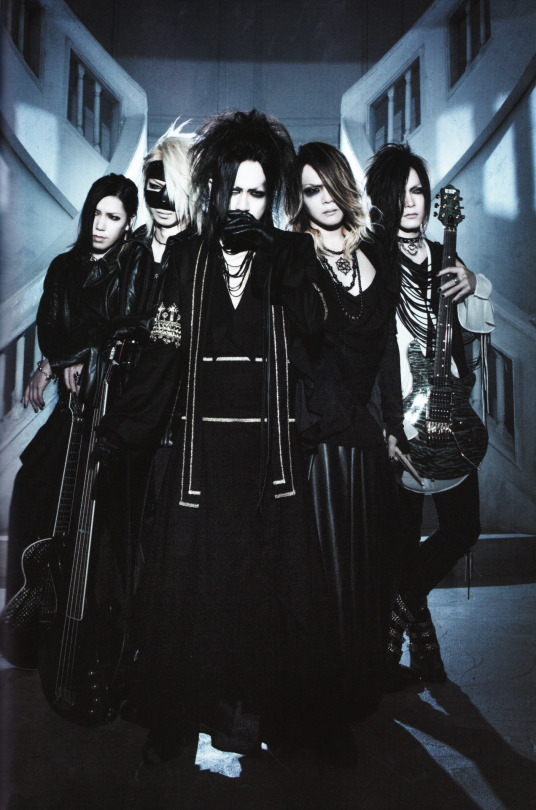
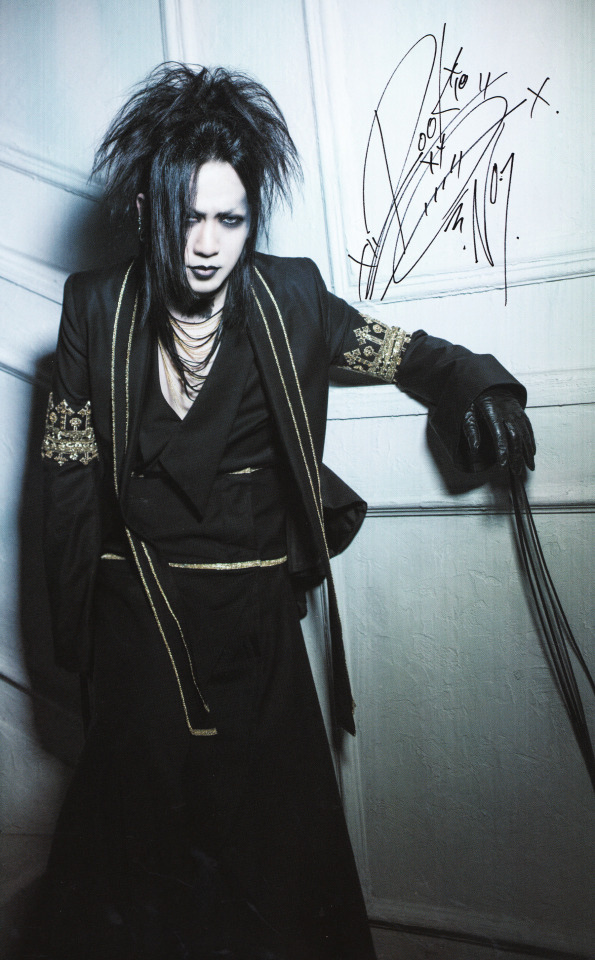
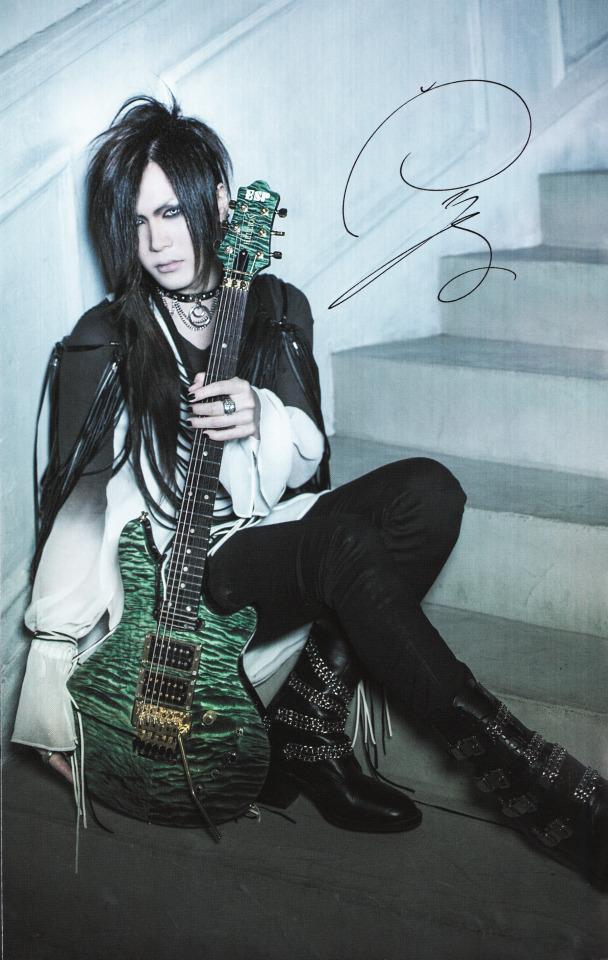
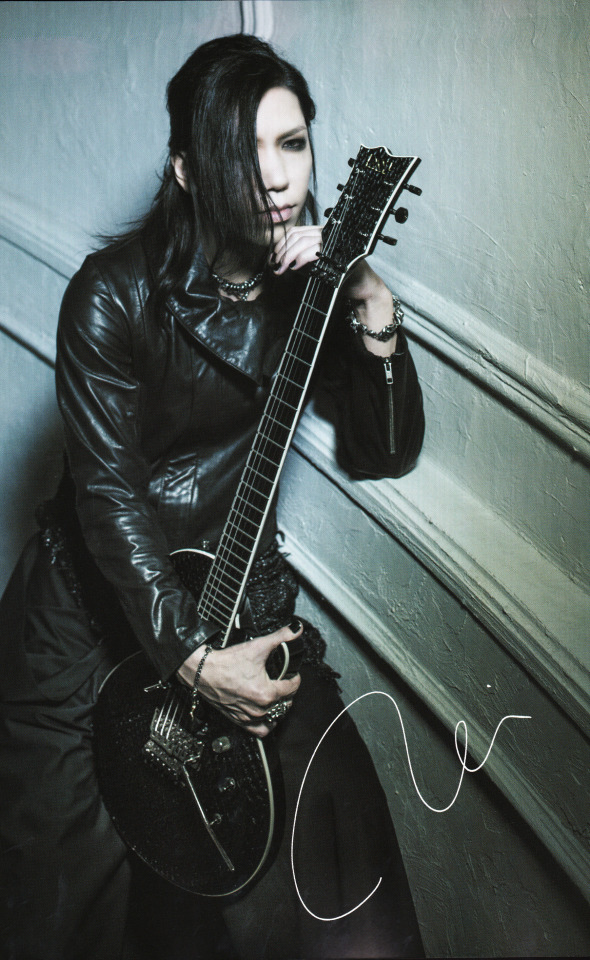


Scans cr: Kyoselflove Translation: ChatGPT
#this isnt the 1 i quoted few days ago btw. and it prob wont be the next 1 i post either...#but i ll get to it.. before the year ends i guess?#the gazette#interview translations#gigs#scans#magazines#dogmatic#mi
29 notes
·
View notes
Note
Hi hope you doing well I wanted you to help me if you can cause it is beyond my power,I'm so sorry for making trouble for you and thanks anyway
Hello everybody, wish great things for all of you
I don't know how many people will read this ,I think nobody care about what I think and what i want so I thought that this place is good to talk,I'm actually don't like to talk I always think I will take people time
I live in a small town in iran ,well I think having dreams for me was always sin japanese rock really changed my life, I had goal after that but it seems I'm always so weak for having dream ,I really liked buck-tick songs their songs was really life saver I really liked atsushi voice after that I listened to dir en grey songs it was very special and different also seeing people like me for the first time made me really happy cause toshiya's personality was really same as me ,after few weeks I watched Nippon budokan dir en grey 2014 at YouTube and I saw fans happiness at the live and from that day I think that I want to be a rock star at japan and wanted to see all of them ,I told my parents that I want to play electric guitar but they didn't allowed me at first and I was so sad after 6 months they told me that if you want to learn first you should learn classic guitar so I went for two years and now after two years I found that at the beginning they just wanted to play with me and they didn't wanted me to play guitar and didn't want to let me go to japan ,now the only think I have is my tears ,when I talk about rock that makes them angry I wrote this to ask you fans if you can tell the dir en grey that there was a girl that wanted to be a guitarist I really want to be a guitarist and I need help ,I am very limited, so I ask for your help
Hello! I sincerely apologize for the delay.
I've been pondering over this ever since you sent me this plea. It would be odd for someone else to send your message to Dir en grey, because then it's more like hearsay and it could seem like a story.
Your best option would be to communicate with Kaoru via TheTheDay, I think. Because he is a guitarist, but also because I think he's more likely to read fan messages and maybe respond. Shinya is guaranteed to read such communications too, but he might not reply seeing as it is a personal message rather than a question, and he's a drummer.
TheTheDay is run through the co-yomi platform, so I don't think overseas fans had as much difficulty registering on that than with the freewill-online sites.
Being a rock star is quite the dream to have! Few people make it into a band, and even fewer actually taste popularity and success. It's never too late - you can at least keep it as a hobby and explore your avenues. Good luck!
20 notes
·
View notes
Text



葵 from the Live Tour 2022-2023 MASS “The Final” 07.15 at Nippon Budokan Documentary
#the gazette#aoi#favorite screenshots#my babyyy#no edits because he’s already too beautiful for this world#miya’s screenshots#my screenshots
87 notes
·
View notes
Photo

1:12 PM EST November 29, 2024:
The Allman Brothers Band - "Stormy Monday (Live)" From the album At Fillmore East (July 1971)
Last song scrobbled from iTunes at Last.fm
Bands Whose Best Albums are Live
1. Humble Pie - Performance: Rockin' the Fillmore 2. Rainbow - On Stage 3. Cheap Trick - At Budokan 4. Deep Purple - Made In Japan 5. Frank Marino & Mahogany Rush - Live 6. The Allman Brothers - At Fillmore East 7. The Who - Live At Leeds
11 notes
·
View notes
Text
Some Kalafina Updates
We got a new Kyoichi Sato blog post today and there was brief mention of Kalafina (he probably received a few inquiries and was asked about his opinion). While he kept it quite vague (probably to not step on anyone's toes during these tense circumstances), he still made his joy and support obvious by referring to one of his old blog posts where he shared a lot of his feelings regarding Kalafina.
2024/10/09 Random Diary "Autumn Rain 2024"
P.S. I can offer no information regarding the whole Kalafina incident. However, my feelings are still as stated in the P.S. I wrote in my blog post on July 16, 2022, "Return of the Rainy Season 2022."
I posted about it back in the day. Here's the relevant part:
PS: I would like to talk a little more about Kalafina. Kaji-chan and Mori-san were the ones to cultivate the soil and to sow the seeds but it was the tireless effort of the three members that made this wonderful flower of music bloom to its full potential (and maybe us musicians also contributed a little bit with our slender means). Their hard work is the vertical thread that is running through 10 years worth of music, starting from the theme songs of “Garden of Sinners” right up until their final live at Nippon Budokan. And then we have the fans who have been supporting Kalafina throughout the years, they make up the horizontal thread. Together they are woven into the most beautiful and amazing tapestry. This tapestry is still in my heart and will continue to shine brightly until the end of time. It would make me very happy knowing that for all the fans, Kalafina’s music also represents an ever-lasting beautiful tapestry.
The tapestry talk is a reference to a song called "Ito". Be sure to listen Wakana’s cover of “Ito”.
..••°°°°••….••°°°°••….••°°°°••….••°°°°••….••°°°°••….••°°°°••..
Other than that, it has been very quiet on the Kalafina front. No social media updates from the girls. Not even any of the regular posts and streams (such as Hi's Youtube updates or her Music Champ live streams). I guess they are still trying to lay low to avoid any more direct backlash. I wonder if we'll get at least a proper video message or something for tomorrow's ticket lottery launch. I mean, they can't remain quiet forever, right?? Let's hope for the best!! *fingers crossed* I'll probably die if I see all three of them interact on video again XD
27 notes
·
View notes